


Longtime Rochester physician, who helped improve access to healthcare in the community, talks about life in retirement and the struggle physicians face to be in private practice P.4





Longtime Rochester physician, who helped improve access to healthcare in the community, talks about life in retirement and the struggle physicians face to be in private practice P.4

Folks taking dietary supplements in tended to help their heart health are just wasting their money, a new clinical trial suggests.
Six supplements widely pro moted as heart-healthy — fish oil, cinnamon, garlic, turmeric, plant sterols and red yeast rice — didn’t do a thing to lower “bad” low-den sity lipoprotein (LDL) cholesterol or improve heart health, researchers found.

“Compared to placebo, none of the supplements had a significant de crease in LDL cholesterol,” said lead researcher, physician Luke Laffin, co-director of the Cleveland Clinic’s Center for Blood Pressure Disorders.
In fact, two of the supple ments made matters worse, Laffin said during a presentation on the findings in November at the Ameri can Heart Association’s annual meet ing, in Chicago. The study findings were published Nov. 6 in the Journal of the American College of Cardiol ogy.
The garlic supplement actually increased LDL cholesterol by nearly 8%, while plant sterols decreased “good” high-density lipoprotein (HDL) cholesterol levels by more than 7%, the results showed.
The clinical trial also demonstrat ed that statins are incredibly effective in lowering cholesterol.
A low dose of cholesterol-lower ing rosuvastatin (Crestor) prompted,
on average, a nearly 38% decrease in bad LDL cholesterol, Laffin said.
“Every participant random ized to rosuvastatin had at least an 18.2% reduction in LDL cholesterol, with half receiving over 40% re duction in LDL cholesterol,” Laffin said. “Whereas with all the sup plements and placebo, you might as well flip a coin in terms of is your LDL cholesterol going to go down or is it going to go up.”
The statin also caused none of the side effects usually cited by peo ple reluctant to take the meds.
“There were no musculoskeletal complaints, no neurological com plaints, no significant elevation in liv er function tests and no meaningful change in glucose as well,“ Laffin added. “So very, very safe.”
Laffin said he used the findings just last week in a conversation with a man who was taking three or four of these supplements as well as a statin.
“I said, why are you taking this? Why are you taking that? And he said, ‘well, you know, one of my buddies in the locker room told me about it,’” Laffin said. “I said, well, you don’t have to. It’s not doing anything. And he turned to his wife and said, ‘OK, I guess you were right, honey.’”
Supplements are a nearly $50 billion industry in the United States, and about one in every five people
using supplements take them to promote heart health or lower their cholesterol, Laffin said.
To see whether these supple ments make any difference, Laffin and his colleagues randomly as signed about 200 people aged 40 to 75 to take either a low-dose statin, a placebo or one of the six supplements for a month.
On top of the drop in LDL cho lesterol, the statin wound up caus ing an average 24% decrease in total cholesterol and a 19% decrease in tri glycerides as well. None of the dietary supplements had any effect on these cholesterol measures.
Dietary supplements are poorly regulated in the United States, and people taking them run the risk of having a dangerous interaction with one of their prescribed medications, Laffin added.
“Cardiologists, primary care phy sicians and others really need to use
these results to have evidence-based discussions with patients. This is a $50 billion a year industry where our patients aren’t getting benefit,” Laffin noted.
But the Council for Respon sible Nutrition, which represents supplement makers, took issue with the findings.
The study “completely misses the point of supplementation by comparing the effects of a prescrip tion drug to dietary supplements in a short-term study. Dietary supple ments are not intended to be quick fixes and their effects may not be revealed during the course of a study that only spans four weeks, partic ularly on a multifactorial condition like high cholesterol. This is a major — and author-acknowledged — lim itation of the study,” Andrea Wong, senior vice president of Scientific and Regulatory Affairs at the council, said in a statement.
Along with the Blue Cross Blue Shield Association, we’re committed to reducing maternal health disparities by 50% in 5 years. That’s why we’re excited to award $1 million across 8 organizations helping combat racial and ethnic maternal health disparities in our local communities. A big congratulations to the recipients of the Member and Community Health Improvement grants.
• Child & Family Resources: Supporting expecting moms and new parents
• Mount Hope Family Center: Assisting teen moms with mental health, parenting, child development, and trauma support
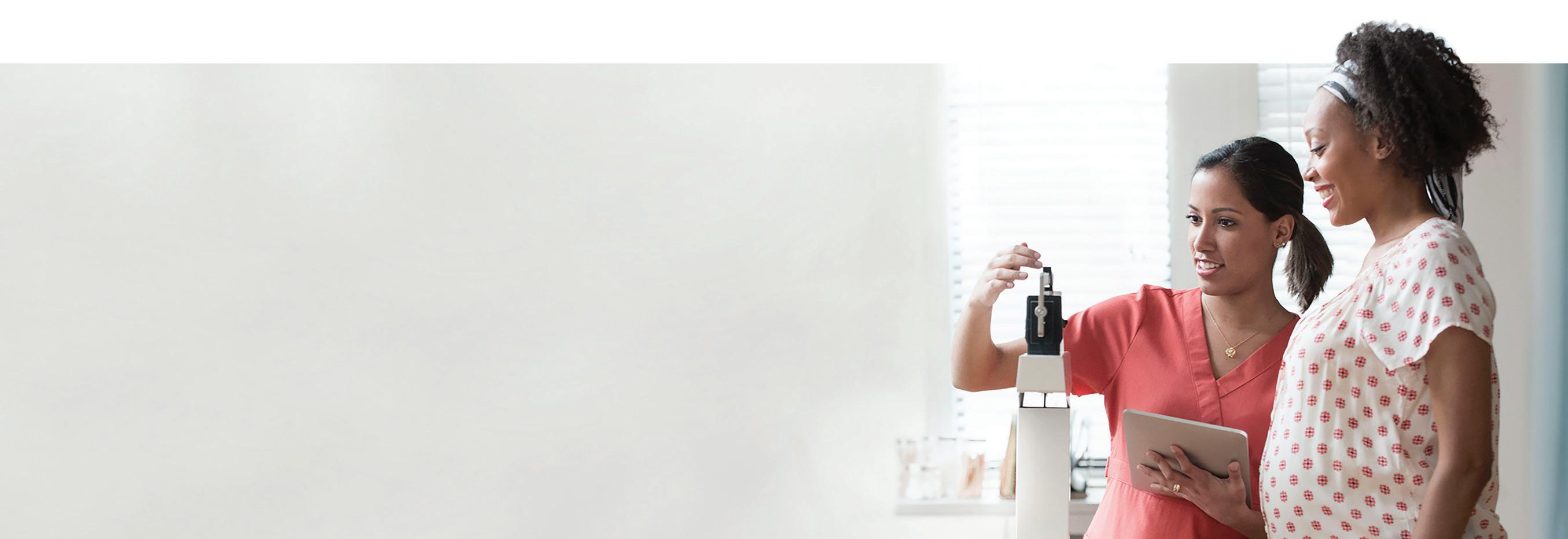
• Contract Community Services: 24/7 telephonic hospital follow-up support, helping with perinatal and postpartum care
• Integrated Community Alternatives Network: Comprehensive prenatal and postpartum care, transitional housing, and community for young homeless women
• Mohawk Valley Health System: Centering pregnancy program to reduce racial disparities in preterm births
• Mothers & Babies Perinatal Network: Providing health and logistical support to new parents through baby’s first year
When every mom receives the care she needs, EVERYBODY

Much like intense exercise, vigorous sex can trigger an asth ma attack in folks with the chronic lung disease, according to new research.
“There is a lack of cur rent literature available on the prevalence of sexual intercourse presenting as exercise-induced asthma,” said study author, physician Ariel Leung, chief in ternal medicine resident at Saint Agnes Medical Center in Fresno, California.
This could be because sex isn’t always the easiest topic to broach with your doctor.
“When sexual intercourse-in duced asthma is properly identified and treated, allergists are placed in a position where they can improve their patients’ quality of life and even their marriages,” Leung said.
When it comes to the risk of having an asthma attack, vig orous sex is akin to walking up two flights of stairs, she noted.
The same measures that keep asthma at bay during ex ercise can also help stave off a sex-induced asthma attack.
“We recommend that pa tients take their short-acting beta agonist inhaler 30 minutes prior to sexual intercourse to prevent an asthma attack,” Leung said. “Some patients might think it takes away from the romance, but nothing is more romantic than taking care of yourself and not having your partner observe an asthma attack.”
The wheezing, cough ing, shortness of breath and chest tightness that are hallmarks of an asthma attack are caused by inflammation that narrows air ways. It can’t be cured but it can be managed.

Along with taking med ication as directed, a healthy lifestyle that includes regular ex ercise and eating well can also help keep asthma symptoms at bay, Leung said.
For the new study, the researchers searched medical literature for articles on sex as a trigger for asthma attacks using keywords such as “sexual inter course,” “honeymoon asthma,” “sexual behavior and allergy,” and “allergic reaction.”
Other than a few case stud ies, they didn’t find much. They did, however, find more research on the risk of allergic reactions and asthma flares from semen or latex condoms.
The research was present ed recently at a meeting of the American College of Allergy, Asthma, and Immunology (ACAAI), in Louisville. Findings presented at medical meetings should be considered prelimi nary until published in a peer-re viewed journal.

Q: How is retirement treating you so far?
A: Doing OK. Figuring it out, but can’t complain at this point.
Q: What was your specialty when you were practicing?
A: I was primary care and internal medicine. I was in private practice up until four years ago with my two partners out in Henrietta. Four years ago we joined Rochester Regional and moved the practice to the Rochester Regional office on Mid dle Road.
Q: The trend seems to be away from private practice to group or hospi tal-based care. Did you start to feel that pressure over the course of your career?
A: Yes, definitely. The reason we ended up going with Roches ter Regional is that the ability for a small, independent practice with three physicians to be able to support the electronic medical record and all the regulations. It became very difficult. So much else has to go
Q: Do you have any advice for younger physicians who want to try to run a pri vate practice? And what do you think is lost with the reduction in the number of private practices?
A: I’m trying to be gentle with how I say this. There are freedoms in private practice that we miss. So we could make special allowances with our staff. If someone calls late in the day and wants to be seen, we could see them. Within the system-owned practice the staff had definitive times without the flexibility. When we saw something going on in the practice that we thought needed to change, we made the decision to change one day and changed it the next. With in a system, it needs to go through review for consistency. For an old, independent-practicing doctor, those are frustrations. What I see now with young physicians getting into practice, they’re more used to the structure, so it seems to be less of an issue for them. Things change over the years, so I’m not sure others feel the way physicians who have been practicing for a long time feel.
A: Basically for the and was the CEO that
time what we noticed working with physicians was that as we worked with them to improve care, they could reach a certain level of results, but they’d peak out. What became clear was that there were other things that were a barrier to patients getting to their optimal health. We looked at the socio-economic status of those patients and determined there were things we needed to do to help physicians do the best that we could for patients. As RIPA closed down, I started working with the CEO of what was at the time Finger Lakes Health Agency to try to integrate medical care with social services out in the community. For example, we were noticing there were areas where blood pressure control was much lower than other areas. They tended to be areas that were the most finan cially challenged and had the most social issues. So we wanted to con tinue the work we started at RIPA to improve social services for the people we were serving. Eventually Finger Lakes Health Agency, as a result of the work we were doing, changed its name to Common Ground Health. That was at a time when it was cutting edge to talk about the social determinants of health. That helped bring about programs like the high blood pressure project that was sup ported by community employers like Wegman’s. We had significant suc cess by setting neighborhood sites to inform the community about how to control their blood pressure. So that’s sort of the evolution of how I ended up at Common Ground Health.
Q: Are you still involved at all in retire ment?
A: I certainly stay in touch with folks. When a little institutional memory is needed, I can provide that. There’s a lot of activity around the NYS 1115 waiver to put funds into the community and decrease Medicaid costs. I’m still discussing some of the things we’ve done in the past with those folks.
Q: From your work with blood pres sure initiatives, what’s something you learned that you’d want to make sure you passed on to future generations of physicians and healthcare advocates?
A: It would be that health is not just healthcare. If you ask someone why they’re not taking their medi cine, you’d often get an answer that they have to choose between feeding their kids and getting their pills.
Or “I can’t worry about my blood pressure when there are rats in the basement.” I think right now we’re hearing about the social determinants of health. We didn’t have that phrase, but we knew there were things that affected patients’ ability to follow their health plan and stay in touch with their provider. It’s now a bigger part of the picture, but 15 years ago you were stuck when it came to finding ways to help these folks as a provider.
Name: Thomas L. Mahoney, M.D. Hometown: Buffalo
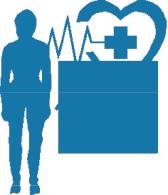
Education: University at Buffalo Affiliations: N/A
Organizations: Monroe County Medical Society; American College of Physicians
Family: Wife, son, daughter and two granddaughters Hobbies: Bike riding
Longtime Rochester physician, who helped improve access to healthcare in the community, talks about life in retirement and the struggle to be in private practice


More and more nervous pa tients are showing up stoned for dental appointments, often forcing dentists to postpone treatment until the patient sobers up, new survey data shows.

As more states are legaliz ing marijuana, more than half of dentists (52%) report seeing patients high on weed or other drugs, a new survey from the American Dental Association (ADA) found.
“In my practice, I’m seeing more patients who are openly dis closing marijuana use,” said ADA spokeswoman Tricia Quartey, a dentist.
Many use marijuana to relax before an appointment, but being high can limit the care dentists can give and result in procedures being postponed, Quartey added.
“When somebody is under the influence, oftentimes we need to give more anesthesia or we may have difficulty with anesthesia,” Quartey said. “If you can’t get somebody fully numb, it’s not exactly creating the same experience and lessening the anxiety. You have to stop a visit
and send somebody home.”


The survey found 56% of dentists did just that, stating that they limit treatment while patients are high.
The data were gleaned from two online surveys, which included over 550 dentists across the United States and just over 1,000 patients. Among patients, the second survey found that 39% said they used marijuana. In addition, 25% of patients said they vaped, and of those respondents, 51% vaped marijuana.



Quartey said dentists should ask their patients if they use marijuana, and patients should discuss their marijuana use with their dentist. The ADA survey found that 67% of pa tients are comfortable talking to their dentist about marijuana.

“The advice to patients is to not use marijuana prior to an appoint ment,” Quartey said. “You think it’s going to reduce anxiety and it’s not. But if you do, inform your dentist so they can be fully aware of what is going on at the appointment. You should also be aware that the dentist oftentimes cancels the appointment.”


A monthly newspaper published by Local News, Inc. Distribution: 33,500 copies throughout more than 1,500 high-traffic locations.
In Good Health is published 12 times a year by Local News, Inc. © 2022 by Local News, Inc. All rights reserved. P.O. Box 525, Victor NY 14564. Phone: 585-421-8109 • Email: Editor@GVhealthnews.com
No material may be reproduced in whole or in part from this publication without the express written permission of the publisher. The information in this publication is intended to complement—not to take the place of—the recommendations of your health provider. Consult your physician before making major changes in your lifestyle or health care regimen.
During the thick of the COVID-19 pandemic, it was anyone’s guess as to how quarantine and isolation would affect HIV rates, which had been inching lower.
“Generally speaking, new inci dences of HIV have been trending downward in New York state for the last several years and significant progress has been made to bend the curve toward ending the epidem ic in the state through a variety of tactics that include increasing the number of people who are aware of their HIV status and take action with that knowledge toward treatment or prevention,” said Matthew Crehan Higgins, associate vice president spe cialty care at Evergreen Health.
Although an overall decrease in diagnoses for the past few years is positive news, Higgins noted an
uptick in the past three years, “an un expected increase in new diagnoses in the Buffalo and Roches ter region,” he said.
In Monroe Coun ty, new sexually transmitted infection rates, including HIV, increased by 77% between 2019 and 2020, a figure representing some of the highest increases statewide out side of New York City, according to a 2021 report from ACT Rochester and Trillium Health.
The report also states that in the first three quarters of 2020 — at the height of the pandemic, the county’s 55 new HIV diagnoses represent as many as the county had in the previ ous four years combined.
“This report is designed to high light the importance of sexual health at the individual and community
levels,” said William Valenti, study co-au thor and co-founder, chief of innovation and staff physician at Trillium Health.
Higgins in part blames the increase in HIV diagnoses on the hesitancy of patients in seeking medical care for symptoms because they feared catching COVID-19. Seeking a di agnosis early can mean early treat ment, which in the case of HIV can mean preventing progression of the infection.
“Ultimately, while seeing increas es in diagnoses is never comfortable, an impact of increased access to and provision of testing is that those infections are identified earlier than they may have been in the past and the person has opportunity to access treatment quickly,” Higgins said.
“The most important thing for peo ple to know, especially if they are not currently aware of their HIV status, is that knowledge is power. HIV treatment can be accessed quickly and is very effective.”
Once a patient receives diagno sis, antiretroviral therapy can help maintain good health and reduce risk of transmitting HIV. No cure for HIV exists. For people who are HIV neg ative but at risk, HIV pre-exposure prophylaxis medication can prevent acquiring HIV.
“There are more options than ever with HIV pre-exposure pro phylaxis available in pill based and long-acting injectable forms,” Hig gins said.

“At the end of 2019, the New York State Department of Health began discussion of reframing the conversation away from the outdat ed disease-based model and toward a sexual health model, which is the path we have been on for a long time. Pressing forth with messages of fear have never worked but making peo ple aware of the options that exist for people of any HIV status and sup porting their harm reduction-based choices appears to be having a good impact overall,” he added.
The Federal Trade Commission (FTC) recently opposed the Certificate of Public Advan tage (COPA) proposed by Syracuse hospitals Upstate Medical University and Crouse Health. The COPA would allow the two hospitals to merge and shield them from federal anti-trust laws. The FTC argued the proposed merger would reduce competition, raise prices, lower quality and de press wages.
The FTC said their research bears this out. I’m sure there is plenty of re search that shows without merging, several financially strapped hospitals would have closed altogether. For rural and even suburban commu nities, a closure results in NO care, NO wages, NO emergency room and longer drives for care.
Ironically, rather than saving a distressed hospital via merger, an aggressive, predatory hospital could just let it fail, resulting in less compe tition. Upstate and Crouse are liter ally across the street from each other, so no outlying community would suffer if Crouse closed.
However, the overall Central New York community needs the beds. Upstate is chock full. So why would the FTC oppose the COPA merger?
If Crouse were to close, Upstate would most likely purchase the assets and hire back the staff. The quality of care would at least be maintained, if not improved. There is still local competition with Trinity Health, which is part of a 95-hospital conglomerate. The FTC fears prices will rise. Wrong. Medicare and Med
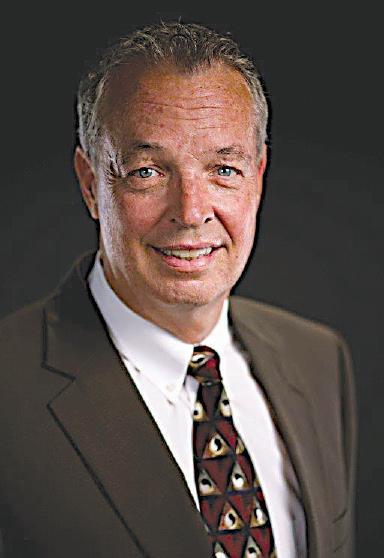
icaid set what they pay prospectively. There is no negotiating. There are enough commercial insurers in town to keep the newly merged entity from flexing their market share. Rais ing “prices” has virtually no impact on hospital revenue when 90% of their revenues are controlled.
In the end, Upstate and Crouse will merge.
To put this potential merger into perspective, Louisiana-based LCMC is planning to purchase three Tu lane University hospitals (currently owned by HCA Healthcare). The local nurse unions are opposing the mega merger which would reduce competition to two huge systems.
When it comes to “competition,” the FTC might want to focus LESS on hospitals merging just to survive and MORE on the lack of choice in most markets when it comes to commer cial insurance options. 80% of all U.S. markets range from NO competition to LOW competition among commer cial carriers. Just five carriers control more than 70% of the commercial insurance market, which includes employer, individual and Advan tage plans. They are: United Health, which controls 28% of the market with $5.3 billion profit in third quar ter 2022; Humana, 19%; Aetna/CVS Health, 11% with revenues of $238.6 billion third quarter; Kaiser Perma nente, 7%; and Anthem/Elevance, 6%. And when insurers dominate a market, they can unilaterally raise prices for their commercial products. (In New York, insurer commercial premium increases are reviewed and approved by the NYSDOH.)
A Harris poll of 5,000 adults found 94% of those who used virtual primary care (telehealth) were satis fied with their experience and 79% felt they had a greater role in manag ing their health. The poll found that about half of the respondents weren’t sure what the term “virtual primary care” meant, indicating providers and insurers need to do a better job of communicating the service. How ever, other surveys have revealed telehealth usage declined from 78% in 2021 to 45% in 2022 among respon dents. This had more to do with per sonal preference than dissatisfaction. Younger adults were more likely to seek care from non traditional pro viders, like retail clinics, showing less loyalty to specific providers. Younger adults, feeling more impacted by the pandemic, were more likely to seek virtual mental health services.
This time of the year, seniors are bombarded with cold calls, texts, emails and mailers from agents and brokers hawking their Advantage plan. And all of us are subject to the ubiquitous TV ads. (Thankfully, open enrollment ends in December.) Ten states have reported to CMS a surge in consumer complaints about ag gressive, misleading, confusing and even fraudulent marketing. Seniors have been duped into changing plans after being told their provider may no longer participate in their cur rent plan or they will be eligible for an increase in their Social Security check. Some marketing materials are made to look like official government documents. Consequentially, a Senate committee is considering stricter marketing rules including prior ap proval of all TV ads, (can they do that for political ads, please?), banning
cold calls and holding insurance companies liable for the actions of their brokers and agents. Half of all Medicare members belong to an Advantage plan.
Over the past 20 years, industry stakeholders increased their lobbying expenses 70% from $358 million in 2000 to $714 million in 2020. In 2020 the breakdown among the four major stakeholders was drug manufactur ers $308M, providers $287M, insur ance/payers $81M and other firms (consulting, policy) $35M. As usual, drug manufacturers lead the pack. They have the largest profits and have most to lose. The last thing they want is to be subjected to congres sional price controls like physicians and hospitals. Providers are lobbying to virtually stay afloat. Hundreds of hospitals have closed in the past 20 years and most surviving hospitals are operating in the red or with razor thin operating margins. Physicians are facing a 4.4% cut in their Medi care payments next year.
gwc@gwchapman consulting.com.
In Monroe County, new sexually transmitted infection rates, including HIV, increased by 77% between 2019 and 2020
Why FTC opposes to proposed mega merger in Syracuse between Upstate University and Crouse

The medical field has long known people are more prone to catching colds and the flu during the cold winter months. Pre viously, scientists primarily attribut ed this to people living and breathing together in enclosed environments. But cold temperatures also make our immune system sluggish and prevent our bodies from fighting off infection, according to a 2015 PBS report, “Scientists Finally Prove Why Cold Weather Makes You Sick.” Now, after the COVID-19 pandemic, taking extra precautions during the winter to maintain health is incredibly vital.
Maintain ing warmth is essential to ward off win ter-related illness es. So keep your home temperature comfortably warm by setting your thermostat between 68 and 75 °F.
Optimum daytime temperatures for living areas are 70 to 72 °F. At night, set the thermostat just a couple of degrees cooler for your bedrooms. What›s comfortable varies from per son-to-person. So if you feel cold at 72 °F, turn it up a notch or two. The idea is to remain com fortable.



Layer your clothing, whether you’re at home or heading out. Wear a T-shirt or cami, long sleeve shirt or blouse, and a sweater over the top. This way, you can set your thermostat at a moderate tempera ture and peel off layers to maintain the perfect comfort level. Layers will also ensure you maintain comfort if you go out.

When you do leave the house, wear warm boots, gloves and a hat even if you’ll be outside just briefly. We lose most of our body heat through the extremities. So it’s vital to keep those areas warm.
A healthy diet is essential year-round. But during the cold winter months, certain foods are particularly beneficial to the immune system.
The much-criticized starchy potato is an excellent source of nutri tion. It’s high in vitamins B6 and C, both of which boost immunity.
Collards, kale, and chard, among other dark leafy greens, are high in vitamins A, C, and K.
Winter squash, including pumpkin, butternut, spaghetti and acorn, is high in beta-carotene. Our bodies convert beta-carotene to vitamin A, another vital source that boosts the immune system.
Several fruits are also particu larly beneficial and protect against winter-related ailments. Citrus fruits are a rich source of vitamin C. Kiwi packs even more of a ‘C’ punch than oranges. Other fruits that help keep your immune system strong include pomegranates, blueberries, cherries, and even bananas.




Dehydration causes a host of health complications. Despite this, most people don’t drink nearly enough water. As a result, health experts say they’re in a state of chronic dehydration. According to the report “Prevalence of Inadequate Hydration Among US Children and Disparities by Gender and Race/Ethnicity: National Health and Nutrition Examination Survey, “ half of all children are dehydrated.”
So how much water should you drink each day? A commonly repeated recom mendation is eight 8-ounce glasses per day. But why would a 100-pound inactive woman need the same intake as an active 220-pound man?



It turns out there’s a formula to determine how much water you should consume. Divide your weight by 2.2. Next, if you’re under 30, multiply by 40; between ages 30 to 55, multiply by 35; if older than 55, multiply by 30. Now divide your result by 28.3 for the number of ounces you should drink daily.
Divide this by 8 to determine the number of cups.
One of the best ways to reduce the spread of germs is by washing your hands regularly.




This not only reduces the risk of transferring your bacteria to others.

If we learned anything during 2020, it’s important to avoid public places and to social distance during a pandemic. When you hear of the flu or virus outbreak in your area, stay home if possible. This will serve double-duty by keeping you out of the cold that makes you more susceptible. When you go out in public, wear a mask, and maintain at least 6 feet of distance.
it reduces the chance that you’ll transfer bacteria to yourself.
When some one with a cold, the flu or coronavirus touches a door knob, handrail, gas pump or other objects, their germs get transferred to the object. Bacteria and viruses can survive this way for several hours to days. If you come along and touch the germ-ridden object, the bacteria transfer to your hands. Then when you scratch your nose or grab a cookie to eat, you become infected.



So when you wash your hands, use soap and warm water. Rub between your fingers and un derneath your fingernails. Then rinse your hands for 20 seconds and dry them thoroughly. In public restrooms, use a paper towel to turn off the water and open the restroom door after you’ve washed your hands.


An active lifestyle is crucial to a healthy heart, lungs, and bones. But a moderately active lifestyle also improves your immune sys tem, according to a 2010 study cited in “Exercise and Respiratory Tract Viral Infections.” Prolonged intense exercise suppresses the immune system, however. So the key is to exer cise regularly but in moderation. Unless you’re trying out for the Olym pics, a 20-mile run won’t likely serve you well. Instead, opt for a brisk walk for 30 – 60 minutes each day. If you want to do some thing more vigorous, do 20-30 minute runs or aerobic
workouts 3 to 4 times a week with weight lifting in between.
If you’re exposed to the flu, be proactive and nip it in the bud with a prescription for Relenza or Tamiflu. The only catch is there’s a short window of opportunity for these medications to be effective. These treat ments must begin within 48 hours of the onset of symptoms. So as soon as you feel signs of the flu coming on, call your doctor. If your doctor can’t see you right away, go to an urgent care.
According to a study for Cedars-Sinai Medical Center, Swedish massage increases lymphocytes, improving the immune system’s effectiveness. So now you have the perfect excuse to exchange massages with your partner to help stave off illness.
When we sleep, our bodies release cytokines, which promote sleep. Specific cytokines also ward off infection. When we don’t get enough sleep, we’re deprived of the protective cytokines, leav ing us more susceptible to infection.
Sleep require ments vary from person to person. But children should get at least 10 hours of sleep each night. Teens require nine to 10 and adults seven to eight.
We’re talking across a small metal table outside the FairPour Coffee Roasters in Fairport on a November morning.
It’s gray and overcast here. Tem peratures are barely clinging to what was left of the late summer.
Inside, FairPour is packed — no place to sit. Out here on the porch it’s quiet and we have a lot of room.
Nicole Coniker, 52, of Fairport, is unwinding her story.
“I was in my late 30s, two children and I just started thinking how life gets in the way,” she explained, a very small cup of coffee in front of her. “I’d started gaining weight, feeling awful. I woke up one day and said, ‘That’s it. I’ve got to do something about this.’ I started running and doing little races, 5Ks and all that stuff, couple of half-marathons. That kept me going. Then life gets in the way again; aging parents and teenagers and all the good stuff that comes with that. And you kind of lose yourself again, fall by the wayside and put everybody’s priorities ahead of yours.”
“Then you wake up one day and say, ‘I’m just not taking care of myself. I can’t do a good job of taking care of my patients and my fami ly when I’m not feeling well,” she continued. “So, I said, ‘One of these days I’m going to become a personal trainer. I don’t know how, I don’t know when. I don’t know when’s a
good time with my nursing career, but one of these days…”
Coniker has 25 years of expe rience in nursing and is a full-time home care registered nurse. But before hours, after hours and on weekends, she is a certified personal trainer where her clientele is 100% female and shares a group of char
scared to go to the gym; they’re very intimidated. They like the conve nience of someone coming to them with equipment. That’s another thing I teach these women — you don’t need equipment. You can just sit in your living room and do certain things. The women who are pressed for time and who don’t have a lot
Nicole Coniker has 25 years of experience in nursing and is a full-time home care registered nurse. But before hours, after hours and on weekends, she is a certified personal trainer. She takes the mini-gym packed in the back of her SUV to a client’s home, office or park to do the training.
acteristics. She takes the mini-gym packed in the back of her SUV to a client’s home, office or park to do the training.
“I get women. I understand them. I am one,” she said. “I know their needs. I have just been focus ing on women in my practice. I’ve had a couple of men reach out and I refer them to this guy I know who’s wonderful. I feel like my training and expertise are geared toward women. I do my best with women. I can relate to women. This is a tough age to be at — you’re sandwiched between ag ing parents — I have two in hospice — then you have your kids.”
She said the women “who seem to come to me are the ones who are
of time in their day, are my clients — the women who are struggling to find time for themselves and don’t want to go to the gyms.”
Everything starts with a free consultation.
“We have to decide if we’re a fit,” she explained. “You have to be mo tivated. You have to want to do this. There has to be some level of moti vation or we’re wasting a lot of time and all the planning that goes into it behind the scenes. We discuss goals, I describe how I work and we decide if we’re a fit. The first visit, we do an assessment, some tests I use to see where they fall, physically, with their strength and endurance. Based on what I gather from these tests, I start
developing a program for them.”
Once she and her client are a team, the next step is the kitchen.
“We go through their cabinets,” she said. “I teach my clients how to read labels. I teach them what they need for their bodies for where they’re at. Everybody’s nutrition plan is different and whether they’re diabetic or high cholesterol or if they have celiac disease — there are so many things you have to gear for. Ex ercise is a big portion of what we do. But nutrition is huge, huge-huge.”
Coniker gained personal trainer certification from the National Acad emy of Sports Medicine in 2019.
“It was a lot harder than I antic ipated, I’ve got to be honest. It was kind of grueling,” she said. “So, I got certified and then I thought, ‘Now, what do I do? How can this fit in with my nursing career?’”
She tried working at the Penfield Y as a wellness coach. But that wasn’t enough for her.
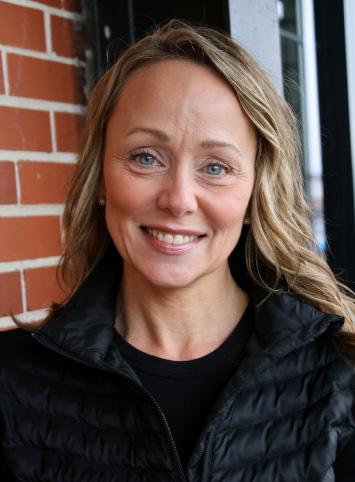
“I thought, ‘What do I want? What am I looking for? I can’t be the only woman who’s looking for something like this at my age.’ There are so many women out there who would like someone to come to their house or maybe their office over lunch or maybe meet in a park some place. Maybe there are other women who hate the gym like I hate the gym and they’re intimidated by it. They don’t know where to start.
“I thought, ‘How about these women who have kids?’ Well, let the kids join. If your kids want to join us, we can do that, too, and make it a family event.”
With an open mind about whom she could help and what that would look like, she packed her SUV with resistance bands, a large gym ball, kettlebells, mats, weights and other stuff and put a sign on the door: RNFit4life.com.

She was ready.
The depth of her nursing experi ence means she can go well beyond working with someone who just doesn’t have time or hates gyms.
“I had a client, a woman who had had a stroke,” she said, her voice shifting in tone. “She lives alone and had fallen. She couldn’t get off the floor. My goal with her was to strengthen her; condition her to be able to get off the floor without help. That’s was our goal, not losing weight. She got stronger through all that. Our goal was to keep her safe at home. I’ll never forget the day I told her, ‘OK, today is the day we’re going to get you on the floor in a spot where there’s nothing around.’
She was so scared. She ended up scooching her way to the couch through the techniques and strengths we had worked on together. She was so happy she got to the couch, she cried.”
That’s why she wants to do what she wants to do, Coniker said.
“I love nursing,” she said firmly. “But I never planned to be a nurse. I planned to be a cop. I have a degree in criminal justice (from Monroe Community College) and I went on to get a degree in public justice at SUNY Oswego. I worked for a pri vate detective to get my feet wet a lit tle. But one day I thought to myself, ‘I want children some day. What if I don’t come home one night? What if something happens?’ And anything can happen. I had a change of heart, but then said to myself, ‘Well, what
now? What the heck am I going to do?’”
A friend stepped in, changing her life with the suggestion that she care for a man with Alzheimer’s.
“It was OK. I went on to get certified as a nursing assistant. I per severed and decided to go to nursing school (at MCC again and Roberts Wesleyan for her BS).
What followed was a nursing career at Rochester General that included med-surg, interventional radiology, neuroscience and most recently, homecare nursing.
“As a personal trainer, I’ve worked with people who have had strokes, people who have multi ple sclerosis, back problems, knee problems, shoulder issues, diabetes. I have an ability to connect with so many types of people. I have a lot of good people skills to work with different types of people who might be a little rough around the edges, who are fearful. In nursing you see it all — so many different types of peo ple you have to get through issues to help.”
She said just the fact that she’s a woman in her 50s helps her under stand the weaknesses and distrac tions and obstacles of those years. Her niche group of clients is in their 40s and 50s.
Add her nursing skills to her per sonal training skills and “It’s another way of nursing,” she said.
“I enjoy it so much that it doesn’t feel like work. I feel like it’s my way of giving back to women — how do you take care of yourself, how do you stay healthy in spite of life that is going on all around you?” she said.
“What we do doesn’t have to be this monumental task and it’s not a quick fix. You have to make small, sustainable changes in your life. That’s the key,” she added. “When I first meet somebody, I say, ‘If you’re expecting to drop 10 pounds in one week, I’m not your person. Or even a couple of weeks. Maybe a pound a week. You might even gain a pound because of life.’”
“It’s knowing how to manage your health, your mental well-being and then all the rest will kind of fol low. There’s no fad, no quick way to it. It’s taking maybe that 10 minutes you have to yourself in the morning and fitting something in there. It doesn’t have to be an hour going to the gym; it doesn’t have to be this huge event,” she explained. “I think more women have realized it’s not as difficult as people make it. Some peo ple put this big block in their head that it’s a huge undertaking.”
If you just make small changes, even with your nutrition – don’t starve yourself, don’t cut everything out of life, don’t stop everything at once — because you will fail, she cautioned.
“That’s not a system that’s set up to be sustainable. Find those little ways to incorporate into your life. It doesn’t have to be an hour. It can be 10 minutes, 15 minutes. Take sugar out of your diet. Know where the hidden sugars are. Know how much fiber you need, how much protein you really need. And going through menopause, is huge,” Coniker said.
She smiled. We’d been talking for the better part of an hour. The November breezes on this gray day were picking up. We were getting cold.
As we parted, I promised myself to go home and look at all the labels in our pantry and ditch the leftover Halloween candy.
The personal-finance website WalletHub in November released its report on 2022’s Most Overweight & Obese States in America, as well as accom panying videos and expert commentary.

To determine which states contribute the most to America’s overweight and obesity problem, WalletHub compared the 50 states and the District of Colum bia across 31 key metrics. They range from the share of overweight and obese population to sugary-beverage consumption among adolescents to obesity-re lated health care costs.
As the daylight hours shrink, people’s moods can wind up in the tank.
Rest assured, you’re not alone. It’s the SAD season for those affect ed by seasonal affective disorder. That’s the depression, fatigue and withdrawal that shorter days and longer nights often bring.
“The seasonal mood change can come in different shapes and forms,” said physician Dorothy Sit, associate professor of psychiatry and behavioral sciences at North western University Feinberg School of Medicine in Chicago.
“It can be a clinical diagnosis of depression, which we call SAD, but some people experience a milder form,” Sit said. “The clinical diagnosis means it is quite intense; it affects people all day for many weeks and can impact their func tioning. In milder cases, people can feel a bit blah, but can push through. Still, functioning will feel a bit harder.”
Besides feeling sluggish, people
may be hungrier, crave carbohy drates, eat more and gain weight. They may also feel less motivated and find less enjoyment in activi ties.
“This is a form of depres sion that cycles naturally; it starts every fall and winter and remits every spring and summer,” Sit said in a Northwestern Medicine news release.
A major remedy for SAD is starting the day with bright light therapy. Sit recommends a unit that produces 10,000 LUX of white light to be used in the 30 minutes after waking up.
“The treatment provides an uplift in the mood, improves a person’s functioning and may com pletely resolve their symptoms,” she noted. “It’s even effective for non seasonal depression, depres sion in pregnancy and in certain people with bipolar depression.”
Sit stressed that it’s important to use the bright light under the direction of a physician or clinician,
who can help detect any side effects or problems that arise, and discuss alternatives if needed.
“Light from the sun is the primary regulator that provides the signal for our bodies’ circadian rhythms,” Sit said. “Not having sig nificant exposure to light can affect that. Bright light therapy is used in a way to amplify our circadian rhythms, which appears to boost our mood. Timing the light so the exposure is first thing in the morn ing may produce more of an impact to regulate our rhythms. We are still trying to fully understand how this mechanism works.”
People can also battle winter blues by staying active. This could include taking hikes with the fam ily or exploring nature. It may be exercising, learning a new skill or visiting a museum.
It’s also important to maintain a regular sleep-wake schedule. Naps should only be 20 to 30 minutes long, so don’t oversleep, Sit ad vised.
This column is for all of you who have friends or family members who live alone.

In December, most folks look forward to joyous holiday time filled with family gatherings, laughter, hugs and gift giving.
But not everyone is filled with jubilant anticipation. Those on their own, who may be missing loved ones, often experience feelings of loneliness and anxiety. The holiday blues emerge, which can dampen their holiday spirits.
What can you do to add a little “merry” to the holidays for those who live alone? You can give the gift of time together — probably the most welcome and cherished gift of all.
Below, I’ve compiled a list of gift ideas for you, beginning with gift suggestions that foster togetherness. These suggestions and those that follow are all designed to put a smile on the face of someone who lives alone.
• A “Be my guest!” gift certificate and tickets to a movie, concert, or theater production. Insist on doing the driving.
• A bottle of Champagne and invitation to join you (and perhaps
a few friends) for a New Year’s Eve get-together. This can be a challenging night for those who are newly divorced or widowed.
Years ago, after my divorce, I popped the cork with my sister and her husband. I was deeply grateful for their invitation to spend the evening together. It got my New Year off to a great start!
• Gift of Time coupons for time together doing things you think your friend or family member would enjoy. Here are a few ideas:
– Baking cookies together
– Go bowling
– Lunch and shoe shopping – A sporting event or fishing adventure
– An afternoon of antiquing – A walk, hike, or bike ride
– Hands-on help with organizing a closet
– A visit to a local botanical garden
– Drinks at a nearby “watering hole” with permission to complain for hours. Ha!
My sister gave me that final coupon last Christmas. It was one of my favorites.
These gifts of time together are precious. Be creative. Keep it personal. And know that the gift of your company will be deeply appreciated and remembered long
after the holidays are behind us.
• A subscription to online lessons, classes, workshops, and tutorials. Do you have a single friend who aspires to play the piano? Check out online music lessons. A divorced sister who eats supper directly from the take-out container? Consider a cooking class. Or a widowed mother interested in life-long learning? A continuing education course might delight her. There are so many possibilities!
• An opportunity to be “treated like royalty.” How many of your friends who live alone indulge themselves in luxury services? My guess is not many, if they’re like me. But that’s what makes this the perfect gift!
Why not surprise her with a spa certificate for a massage, facial, manicure, or pedicure? Or make his day with a certificate for a gentleman’s facial or deep tissue or sports massage?
• For women who live alone – fresh flowers delivered. Do you know a single woman who lives by herself? When’s the last time she got flowers? It’s probably been years . . . don’t I know it.
Consider sending a bouquet of roses or tulips red for love, yellow for friendship, pink for appreciation, and white for sympathy.
• And speaking of deliveries, check out Gift-of-the-Month clubs. Coming home alone at any time of year can feel a little empty, but it can really feel lonely during the winter months. Discovering a package on the doorstep can change everything.
Go online and check out gourmet gifts and food clubs. You won’t believe the variety of delicious items that can be delivered on a monthly basis: chocolates, hot sauce, cheese, tea, cigars, wine, beer, pastas, olive oil, cookies, popcorn, pancakes, or entire meals. I love this idea so much I might treat myself.
• An AAA membership. I don’t leave home without it. A flat tire, an empty tank, a lost key I’ve been there. AAA has saved the day!
• Handy tools and supplies for emergencies or life’s unexpected moments. Consider a compact “nobattery” wind-up flashlight-radio with a hand crank. Or a Johnson & Johnson All-Purpose First Aid Kit.
• How about a Swiss Army knife, complete with a screwdriver, scissors, toothpick, and tweezers? It even comes with a nail file and corkscrew.
• A front-entrance motion sensor light that will illuminate your front porch after the sun goes down. This energy-saving device will light the way for visitors (or a new suitor?) and may also scare off intruders and critters. Those who live alone will appreciate the peace of mind.
• A gift certificate for car washes. While not necessarily a “safety gift,” I always feel better when my car is clean (and that can’t help but make me safer on the road). Who doesn’t enjoy a clean, sparkling car? Choose a car wash near your recipient’s home or work place.
• A donation to a good cause. Making a charitable contribution in someone’s name is a gift you can both feel good about. Think about your friend or family member who lives alone. What do they care about? Choose an organization that supports his or her values.
• A subscription to “In Good Health” or “55 Plus” produced by editor and publisher Wagner Dotto. Both periodicals are filled with inspirational articles and trusted health information. Consider a gift subscription for someone you love. Chances are good your holidays and theirs will be the healthier and happier for it.

Infant head-shaping pillows are not approved by the U.S. Food and Drug Administration and should not be used, the agency warned early November.
The pillows can create an un safe sleep environment for infants, potentially contributing to the risk of suffocation and death.
Marketed as changing an infant’s head shape or symmetry or claiming to treat other medical conditions, they have no demonstrated benefit, the agency said in a news release.
“If you own an infant head-shap ing pillow, throw it away; do not donate or give it to anyone else,”
the alert said. “Be aware that infant head shaping pillows are not safe or effective for preventing or treating flat head syndrome or other medical conditions.”
In most cases, flat head syn drome will go away on its own as an infant grows up, the FDA said. It is not painful and it does not cause any developmental concerns. Using a head-shaping pillow may delay necessary medical evaluations and mask something more serious, such as craniosynostosis, where a develop ing infant’s skull bones join together too early.
The U.S. National Institutes of
Health and the American Acade my of Pediatrics both recommend infants sleep on their backs in a bare crib on a flat — not inclined — surface without pillows, toys, soft objects or loose bedding.
These recommendations are intended to help reduce the risk of Sudden Unexpected Infant Death (SUID), a category that includes Sud den Infant Death Syndrome (SIDS).
Health care providers should dis courage the use of infant head-shap ing pillows and educate their patients about the risks, the FDA added.
Infant head-shaping pillows are typically small, with an indent or hole in the center designed to cradle the back of an infant’s head while the infant lays face up.
Some do not have the indent and are rectangular-shaped.
The FDA has cleared caps, hel mets or head bands to improve head symmetry or shape in infants and toddlers from 3 months to 18 months of age.
Some devices are also intended for infants from 3 to 18 months of age whose head shape has been surgi cally corrected, but who still have a moderate-to-severe flat head, the FDA said.
The agency said it has communi cated its concerns about promotional materials to companies that make these pillows and will continue to monitor claims for these products.
Any questions can be sent by email to the Division of Industry and Consumer Education (DICE) at dice@ fda.hhs.gov or asked by calling 800638-2041 or 301-796-7100.

• TOP SEEDZ A Buffalo-based company that specializes in healthy, tasty food including gourmet crackers and roasted seeds. Why seeds? Seeds contain fiber, protein, zinc and others that aid in the repairment of muscles. The crack ers, seeds and related gift items available at Wegmans, Tops, Lori’s Natural Foods, Parkleigh and online https:// topseedz.com
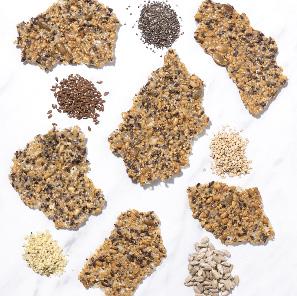
• FOOT MASSAGERS Brookstone at Eastview Mall, Victor, has an array of foot massagers. The feet are of ten overlooked when thinking about health, but healthy feet are essential to posture, gait and balance. The array of massagers can help improve blood flow and circulation in the calves, reduce swelling and relive soreness, or relax tired feet. https://brookstone.com/collections/ home
• CBD PRODUCTS Hemp it Up, 622 Park Ave. in the Body Mind Float Center is one of the many local places where CBD products are available. (CBD is also offered in private stores everywhere) The products come in a variety of forms from gummies to creams and sprays. Products can help relieve pain, and lower blood pressure. Studies have found that CBD products can help with anxiety, some neurological disor ders and several cancer-related symptoms. CBD products are also offered at Eastview Mall. https://www.hempitupgifts.com
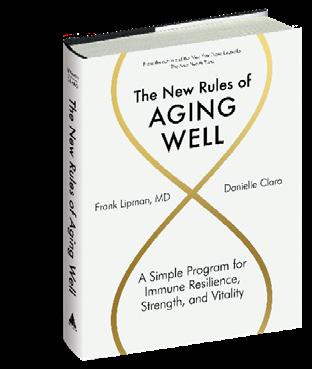



• BOOKS ON HEALTH, Barnes and Noble, Pittsford Plaza, has more than 3,000 titles related to healthy living and has comfort able places to browse the books. Some popular reads include "How to Be Well: The 6 Keys to a Happy and Healthy Life" by Frank Lipman and Amely Greeven; "Intuitive Eating: 365 Daily Practices and Inspi rations to Rediscover the Pleasure of Eating" by Evelyn Tribole; "Why Has Nobody Told Me This Before" by Ju lie Smith and "Burnout: The Secret to Unlocking the Stress Cycle" by Amelia and Emily Nagoski. Inde pendent books stores can order most titles for you and many also are available on Amazon. https://barne sandnobel.com
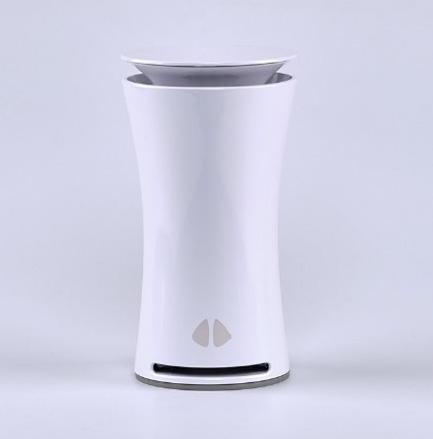

HONEY HEALTHY doesn’t have to be boring. Honey has many health benefits. Although it is a type of sugar, the type of sugar on honey is healthier than glucose. Honey can also help reduce cravings, which is helpful for weight loss. It has many natural antioxidants, and has been found to turn “bad” cholesterol into “good” cholesterol. And it tastes great so check out The North Bee and Products from the Hive. www.thenorthbeeshop.com/



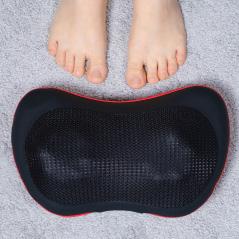

• INFRARED SAUNAS are available at Lumos, Rochester, Greece and Victor. Being in a sauna is very much like doing exercise. Heart rate increases, blood vessels dilate and sweating increases. This process increases blood circulation. Their infrared saunas at Lumos can remove toxins from your body and enhance your immune system, relieve pain and reduce stress.
https://lumosinfraredsauna.com
• AIR PURIFICATION SYSTEMS: Environmental Solutions is a locally owned company that sells home air purification sys tems that can cleanse your air in a single room or an entire house including mold spores, virus particles, dust, smoke, air pollutants. A popular first step is using the UHOO Smart Indoor Air Quality Sensor. There are products that make it easy for a homeowener or renter to assess and install a system. https:// www.envidiy.com/products
• ESSENTIAL OILS are a popular health treatment and oils are used for different purposes. Lemon and peppermint are used to aid digestion; sandalwood and lavender help calm nerves and reduce stress. Chamomile is used to improve mood and promote relax ation. If you are not sure what to select, Amazon offers several Aromatherapy Guides. Essentials oils can be used in diffusers designed for the home, office, or car and others are developed for use on the wrist or foot. Pharmacies, specialty stores and health food markets carry essential oils.

• HEATABLE NECK WRAPS are available at every pharmacy, physical therapy center and big box stores. They vary in price and features microwavable or electric and come in a variety of sizes and styles. The popularity of these products is related to heat’s ability to reduce pain, cramps and muscle strain. Bed Bath & Beyond, some health stores, pharmacies and grocery chains offer a variety of styles, shapes and sizes.
• CATS, DOGS, AND OTHER PETS might seem like an odd gift choice, but pet ownership is associated with lower blood pressure, reduction in the risk of having stroke and getting more exercise. Walking a dog typically increases social interaction and a connection with one’s neighborhood. The companion ship of having a cat has stress-relieving benefits. Watching fish in an aquarium is soothing. Before heading to the animal shelter, make sure your gift receiver is open to caring and loving a pet and can afford the regular health checkups.
www.lollypop.org.
No matter what our age, we all want to stay healthy. So, if your colleague, family member or friend does not seem to need anything — here a few suggestions.
 By Deborah Jeanne Sergeant
By Deborah Jeanne Sergeant
Shopping, baking, decorating, traveling, hosting, special events: is there any time in your busy holiday schedule for fitness?
Unfortunately, many people let it slide for the month until faced with extra pounds and deconditioning by January.
Despite the hectic season, it is possible to sneak in fitness.
“An easy way to burn extra calories is 10-minute walks after every meal,” said Austyn Affronti, certified personal trainer and owner of Affronti Fitness in Rochester. “You can add 5,000 steps every day. As you eat food, the body gets more efficient in absorbing calories. Walking after meals keeps your metabolism going.”

Grab a family member to join you and you can use this time to catch up and look at the community’s decorations. Or call a friend while you walk.
The high-intensity interval training style workout crams a lot of movement into a short time period. As a variation of HIIT, Affronti said tabata workouts can offer a good calorie burn. A tabata timer can help
keep the sessions moving, as these timers go off in brief cycles to moni tor an intense workout session. After warming up and stretching, perform a four-minute session, alternate be tween two bodyweight exercises like jumping jacks, burpees, jump squats and mountain climbers every 20 sec onds with a 10-second rest between them. Do each movement to 100% capacity, as hard and fast as possible.
“It forces you to do quite a bit of work in four minutes,” Affronti said. “A lot of time under tension with little recovery time pushes the intensity.”
If your holiday plans include traveling, workouts can be more challenging to fit in. But it’s still pos sible. Kerri Howell, online personal trainer, nutrition coach and owner of Rochester-based fitprmomlife.com, encourages travelers to “sneak out early in the morning before everyone wakes up and get a morning walk in,” she said.

You may even recruit other early birds to join you.


If you stay at a hotel, try to find one with a gym so you can “take advantage of the equipment it has,” Howell said.

Although finding time for your normal spinning class or hour-long run may be hard, Howell tells clients that sticking with just 15 minutes of resistance training per day will help them maintain their gains.

To save time, “choose one lower body and one upper body compound lift,” she said. “For example, do a squat variation and pushups one day, a lunge and triceps dip another day. Do four sets of 10 for each. Do this five times a week for 15 minutes each. That’s it. You’d be surprised how much you can keep muscle do ing this.”

Ironically, we tend to not only move less but eat more during the season — and many of those food choices are usually poor. That’s why Howell reminds clients to mind their diet if they are moving less. It starts with “a healthful, protein-rich break fast and make good choices at the
buffet party table,” Howell said. While starving yourself before a party can lead to overeating, it can help to lower caloric intake earlier in the day.
“Eat a lighter breakfast smoothie or protein shake to leave room for indulgence,” Howell said.
Kerri Howell, is a online personal trainer, nutrition coach and owner of Rochester-based fitprmomlife.com.
Austyn Affronti, is a certified personal trainer and owner of Affronti Fitness in Rochester.


The holiday season can generate warmth, togetherness and joy among family members. But for some, it can manifest drama, emo tional pain and frustration.
If some of your family members cause the latter, you can plan to pre serve your mental health when you get together.
“Be aware of the concept of antic ipatory anxiety,” said Dawn LeBeau, licensed clinical social worker and owner of Dawn LeBeau Counseling Services in Rochester. “Anticipatory anxiety occurs when we think about something that’s coming up. It peaks right before the actual event, when we walk through the door. Often, it falls off hard and fast after. Rarely is the situation as awful as we antici pate.”
Don’t anticipate that your uncle who asks embarrassing questions will behave himself this year. LeBeau said that instead, it’s wise to prepare for the questions with a few answers. For example, if your uncle asks why you dropped out of college, explain your plans for the year. But don’t ex pect him to simply accept you know what you’re doing and praise your ideas.
The issue is with him and not you. If Uncle Nosey asks why you’re not as successful in business as your cousin, perhaps he is trying to com pensate for your cousin’s romantic shortcomings.
Maybe your uncle asks within your cousin’s earshot to build her up — even though it tears you down. Or he could boast about her business so that he looks like a better parent.
Sometimes, Aunt Busybody asks about your love life so she has some thing to think about and talk about. Share only what you want the rest of your family to know. Or perhaps she lives vicariously through her younger family members because her own life is so boring. Her motivation could be as innocent as hoping you find someone as wonderful as her husband, without the realization that you feel content single.
When pressed about a sensitive topic, “practice a pause,” LeBeau said. “That’s the deep breath we try to take before we respond. Or take a quick trip to the bathroom to let yourself settle a little bit.”
Those knee-jerk responses and fighting fire with fire result in regret. Asking, “Why do you want to know?” both buys time and puts the questioner on the spot.
Sometimes questioners clearly want to stir the pot, such as, “You don’t really think your daughter has chosen the right career, do you?”
Of course, you love your daugh ter and want to rush to her defense. However, staying upbeat is the right strategy: “I support my daughter’s decisions; it’s her life.” And then change the subject.


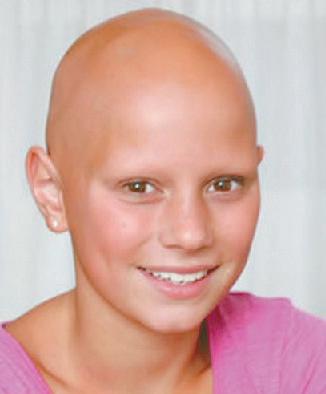
Emulate the 30-something woman pressed about why she’s not married. She offered, “Just lucky, I guess” as her cheeky reply.
“A sense of humor can diffuse a
situation,” LeBeau said.
Just don’t make the humor at the expense of others. Cruel remarks or mocking ramps up the drama.

No law says that you must discuss any topic a family member brings up. LeBeau said that it’s per fectly OK to say, “I’m not prepared to talk about that right now” and change the subject.

“I encourage people to practice that,” she said. “As a guided imag ery, imagine yourself coming up with and using that response. The more you practice that response, the more comfortable it gets. We don’t owe people an answer. Being respectful of your own self is important.”
Ask the other person a question about a positive topic or offer infor mation on something you care to discuss.
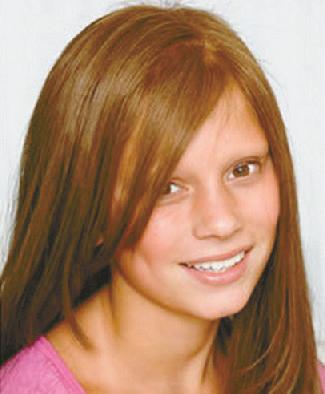
It can be easy to show up at a family gathering anticipating a bad time and then experience one.
LeBeau said that looking for and mentally emphasizing the positive aspects is better for mental health. Note that cousin who offered a com pliment or the positive comment on your dessert or outfit.
“If we’re looking for love and kindness, that is what we’ll find,” she said. “We often write a narrative that people meant to be hurtful, but some people lack social skills that leads to them being hurtful.”
Avoid going to a family gather ing with the expectation of others meeting your emotional needs, especially if they have not done so in the past.
“The most important thing is to take care of ourselves before we have these kinds of potentially tense situa tions,” said Erin Thompson, licensed clinical social worker and owner of Believe and Breathe Counseling in Penfield.


This could include taking time for mindfulness, deep breathing and other methods of de-stressing. Get ting into the right frame of mind can make it easier to handle triggering situations or comments.

Mentally rehearse “safe” topics, like the weather or sports which oth er family members cannot turn into verbal abuse. These distractions can keep the conversation from veering into dangerous waters.
If that happens anyway, Thomp son advises going outside for a break, helping out in the kitchen or joining the children for a while. Stepping away can reduce the effects of hurtful comments.
Zero in on a positive, uplifting family member. But extend grace to the downers, especially considering the social awkwardness generated by the pandemic’s isolation.
Affordable Financing. Onsite service and repairs. 1425 Jefferson Rd., Saginaw Plaza, 2nd floor Rochester, NY 14623 • 272-7320
Plan to give your family a signal it’s time to go if things get too dicey. If your mental health will suffer regardless of the strategies you em ploy, it’s OK to stop in briefly to the gathering and then leave — or not even go at all. See non-toxic family members another time so you can avoid others’ verbal haranguing.
Affordable Financing. Onsite service and repairs. 1425 Jefferson Rd., Saginaw Plaza, 2nd floor Rochester, NY 14623 • 272-7320
With the holiday season comes good cheer, jolly times and a bevy of buffet options. Un fortunately, many of the choices are calorie-laden and void of nutrients.
With a few strategies, you can stay festive while eating well and not forgoing favorites.
It may seem sensible to skip breakfast and lunch if your plans include a big family meal in the evening. Haylee Pink, dietetic intern at Geneva General Hospital, warns against it.
“You think going on an empty stomach will help you avoid overeat ing, but you tend to overeat,” Pink said.
It’s far better to eat modest, bal anced meals throughout the day with plenty of protein and produce so hunger does not drive food choices.
Pink also advises bringing your own dish if possible.
“You can add fruit and nuts to a salad, or bring some veggies and a type of dip, or make fruit kebabs,” Pink suggested. “Everyone likes charcuterie boards. You can make it look like a Christmas wreath.”
When facing down the buffet, look for veggies without sauces and dressings, such as raw, steamed or roasted. Fill half the plate with these and some fruit. Whole fruit is always
a good choice. Fruit “salads” with marshmallows or whipped topping pack plenty of sugar.
Look for lean protein sourc es: turkey breast, shrimp cocktail, and salmon. Marbled beef, ham and processed meats are less than ideal choices. Protein should cover one-quarter of the plate.
How food is prepared also mat ters.
“Oven roasted, baked or grilled are better than fried,” Pink said.
Starches should occupy only one-quarter of the plate. Finding whole grain options may be difficult. Brown rice pilaf, whole grain rolls or sweet potatoes are a few examples.
As at any meal, portion size makes a difference in caloric intake. Pink uses a smaller-sized plate to control portions.
“You often put way more on your plate than you’re going to eat,” Pink said. “Start with small portions as you can always go back for more.”
A holiday party or meal without dessert seems rather Grinch-like. Pink advises taking just a small serv ing and if possible, choosing some thing containing fruit.
“Look at the low-glycemic and anti-inflammatory foods,” said Carla Buscaglia, certified nutritionist, master herbalist and owner of Global Nutrition in Pittsford. “If it’s Christ mas cookies versus cut-up fruit, pick


something you like, like a Christmas cookie and the rest should be the vegetable and fruit tray. You still get the cookie, but you’re also eating fruits and vegetables.”
She likes to prepare a vegetable tray for a party and if time crunched, pick one up from the grocery store. Munching on nutritious, low-calo rie veggies can displace noshing on high-calorie treats. They also keep the blood sugar stable, as do other low glycemic foods.
“Blue chips are low glycemic,” Buscaglia said. “And you can get humus or guacamole or salsa. It fills you up from the fat and they’re low glycemic.”
Many people unthinkingly drink far more calories than they are aware.
Buscaglia said that adding a touch of punch to a serving of water can eliminate sugar spikes while making the beverage more flavorful.
“Make good decisions if you choose alcoholic drinks,” she added. “Look at Tito’s vodka, mix with a touch of cranberry and seltzer water. Try that instead of eggnog with sugar.”
Alternate drinking water with caloric beverages to reduce the calor ic intake.
“As we’re getting older, we have to look at the holidays differently,” Buscaglia said. “It’s about family, not just food. It’s not a free-for-all of everything. It’s six weeks of 52. If you’re prepared, you won’t have that remorse in January.”

“The original diagnosis was to treat my prostate cancer with seven weeks of radiation, five days a week. I was kind of upset that I was never given the option of CyberKnife,” said Frank. “The precise radiation achieved by CyberKnife, far fewer treatments, and the personalized care I received from Dr. Chin and his team made my decision an easy one. Better, the treatment was a real success!”
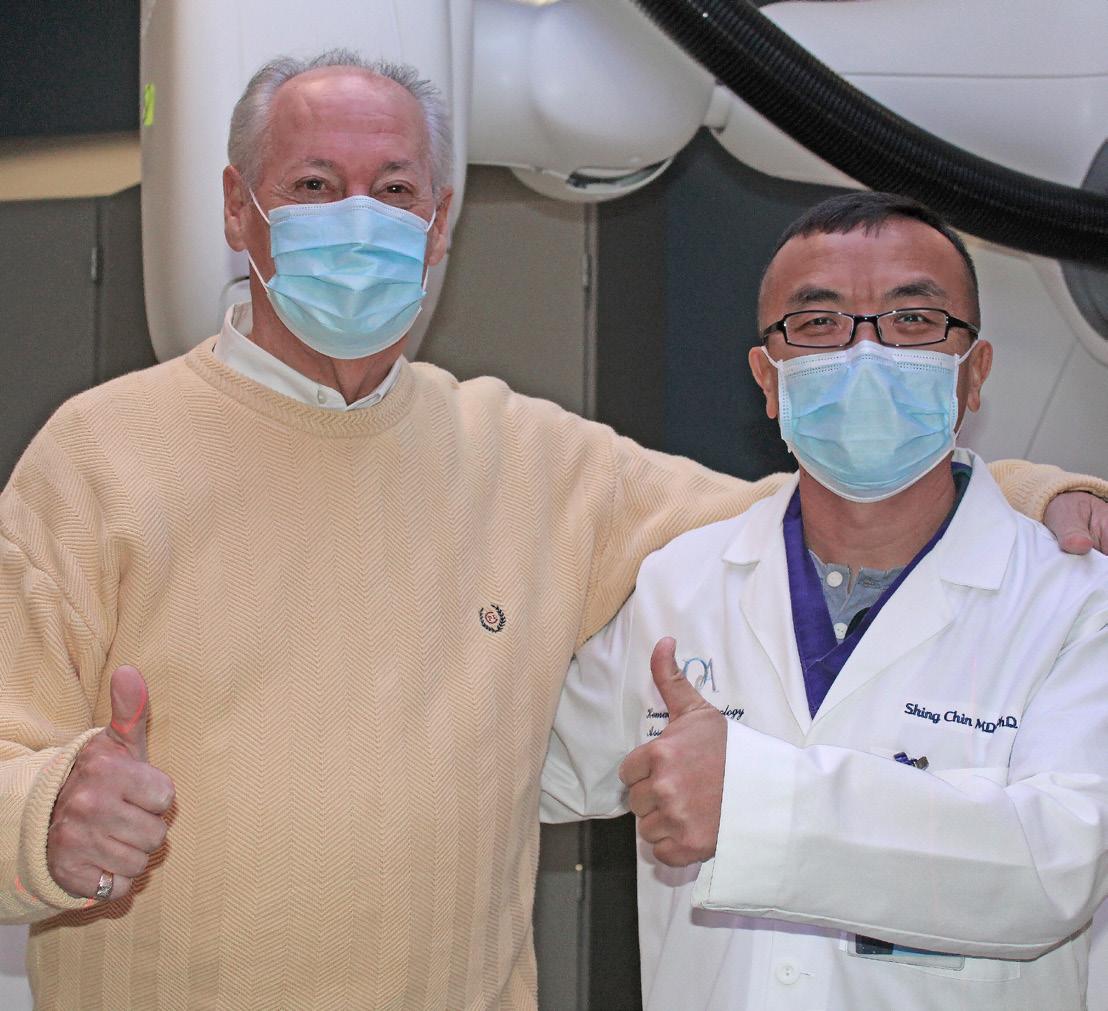
Frank
Every December, my husband and I let down our “meat guard” and consume a cut of beef that we rarely eat: prime rib. It’s an indulgence we justify because it’s the holiday, it tastes delicious and, well, you know, it’s what everyone wants.
Apparently, we’re not alone. Prime rib, according to multiple sources, is one of the top 5 meats con sumed during the holiday season.
But is it the healthiest meat choice? Oh, probably not. But since many of us do eat it on occasion, here now is everything you ever wanted to know about prime rib (but were afraid to ask).
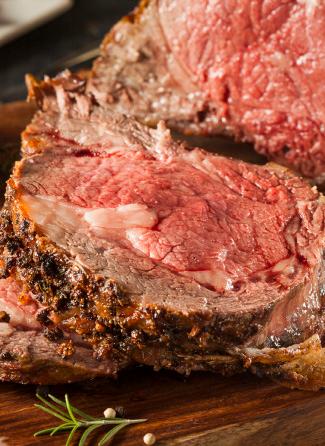
It can be. Prime rib is a tasty source of many critical nutrients. A 3-oz portion (about the size of a deck of cards) boasts about 20 grams of complete protein, which delivers a decent chunk of recommended daily amounts for many. Essential for building and maintaining tissues and cells, protein also bolsters your immune system, provides energy, and balances fluids.
On the vitamin B front, prime rib rocks with several B vitamins, most specifically B-12 (nearly 100% of your daily needs). Because B-12 is import ant for red blood cell formation, it’s crucial for the prevention of anemia. One serving of prime rib also contrib utes good amounts of B-6 and niacin, both needed for turning food into energy.
Prime rib sizzles with minerals, especially selenium, iron and —the

most abundant mineral of all — zinc. While zinc fortifies your immune system, selenium protects your body from oxidative stress, and iron keeps your engine running.
Possibly, and here’s why. A 3-oz serving has 300 calories, 72 milli grams of cholesterol and 24 grams of fat (10 of which are saturated fat). Because cholesterol and saturated fat can lead to heart disease, the Amer ican Heart Association recommends that we limit our daily consumption of both: cholesterol to 300 milligrams and saturated fat to 20-22 grams. As suming that “festive” portions might land closer to 6 ounces for many, we could easily knock off a day’s worth of saturated fat and nearly 50% of our cholesterol limit in one sitting. Yikes, and we haven’t even men tioned the 600 calories!
Fat, fat and more fat. The “eye” of meat in prime rib’s center is not only marbled with fat, it has a fat-marbled muscle around it. More over, a thick cap of fat surrounds most of the roast. Since the muscles of this cut aren’t heavily used, prime rib is also extremely tender and juicy.

Only you and your heart can answer that. But if you do indulge, experts suggest moderate portions and no seconds

Serves 10 — Adapted from tastesbetterfromscratch.com
5 pounds beef prime rib: bone-in or boneless 3½ teaspoons Kosher salt, divided 2 teaspoons coarse black pepper 2 teaspoons fresh rosemary 1 teaspoon fresh thyme 8 cloves garlic , minced ¼ cup olive oil horseradish (optional)
Remove your prime rib from the refrigerator one hour before cooking. Season it on all sides with 2 teaspoons salt and cover it loosely with plastic wrap as it comes to room temperature.
Place oven rack in the center and preheat oven to 500 degrees F.
Mix together 1½ teaspoons salt, pepper, rosemary, thyme, garlic, and
Prime rib is graded accord ing to fat marbling, age and price. Prime is the best, followed by Choice and Select. Some butchers offer dry-aged prime rib, which adds another $2 to $3 a pound. Giv en that this meal will be a splurge no matter how you slice it, Amer ica’s Test Kitchen says springing for the “Prime” cut makes sense, although a “Choice” roast will be almost as good. Many butchers detach the bone and tie it back on, which simplifies carving and slicing and may add extra flavor. Boneless versions are also available.
olive oil. Pat the roast with paper towels. Spoon seasoning over it, rub bing it onto all sides.
Place the roast bone-side down in a roasting pan. If using boneless, place the roast on a rack inside the pan. Insert an ovenproof thermome ter into the thickest part of the roast.
Brown the roast at 500 degrees for 15 minutes, then reduce the oven temperature to 325 degrees and roast for another 20-30 minutes until the thermometer reaches 125 degrees for rare/medium rare (roast will con tinue to cook slightly after removing from the oven). If you like your meat more cooked, leave it in the oven longer.
Remove roast from the oven and tent it with foil. Allow it to rest for 20 minutes before carving. Carve your roast by slicing against the grain at about 1/2 inch thickness. Serve with horseradish, if desired.
Anne Palumbo is a lifestyle colum nist, food guru, and seasoned cook, who has perfected the art of preparing nutritious, calorie-conscious dishes. She is hungry for your questions and comments about SmartBites, so be in touch with Anne at avpalumbo@aol.com.
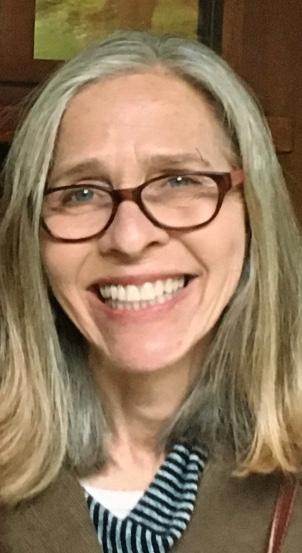
Do you know your family’s health history? This season may be a good time to find out.
“It’s important to know your family history because it can give you insight into what challenges you may face in the future,” said Mary Beer, registered nurse, master’s in public health and director of public pealth for Ontario County Public Health.
“For example, if you have a history of breast cancer in your family it will be prudent to do regular self-breast exams and to share the info with your providers so they can advise regarding mammograms.”

The holiday season may seem an odd time to talk about family health history. However, in some ways, it’s the ideal time. You may see relatives face to face whom you seldom see. It’s also a time for reminiscing and sharing. How you bring up these topics makes a difference between learning more about your medical background and spurring a completely awkward and unwanted conversation.
Beer said that if family members withhold health information, it may be for reasons important to them. That could include embarrassment over perceived stigma, such as for a mental health issue. Or perhaps discussing the death of beloved family members dredges up painful memories of a dark period.
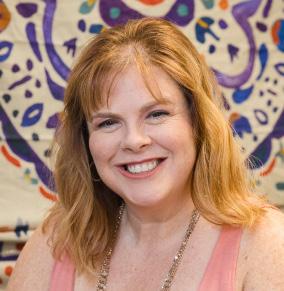
“We cannot control how someone will receive it,” said Dawn LeBeau, licensed clinical social worker and owner of Dawn LeBeau Counseling Services in Rochester “We want to be compassionate and respectful.”
Begin conversations about health matters with the person at the heart
of the issue to avoid hearsay. For most families, it’s better to initiate the conversations one on one, not at the dinner table.
“Be honest,” LeBeau said. “You could say, ‘This is uncomfortable for me to bring up, but this has implications for the rest of us. Is it OK that I check in about this?’”
Instead of asking in the vein of morbid curiosity, frame your questions as to how they relate to you or your family, such as a trait or symptom you notice in you or your child that a relative shared. Explain why you want to know, such as to seek early intervention.
“People are much more apt to talk about any kind of health history, especially about mental health, if they think it’s helpful and not just sharing deep, dark secrets,” said Erin Thompson, licensed clinical social worker at Believe and Breathe Counseling, PC, in Penfield.

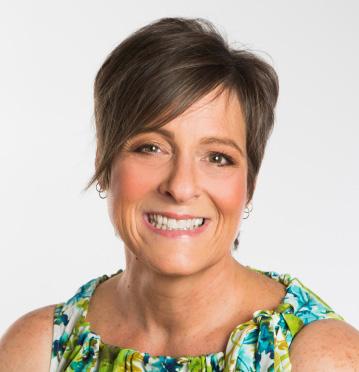
You can always assure the person
sharing that the information will be used only with a healthcare provider as needed.
“If you can frame it in a way where they know it will help, they’ll be more apt to discuss these topics,” Thompson said. “It’s not just talking or gossiping. Framing it in the right way helps.”
Engage the person in a conversation, not an interrogation. It may also help to start with your concerns for yourself or your child.
Don’t let concern over the other
person’s possible sensitivity deter you from learning your family’s health history.
“It is critical to ask about family health history to aid in the identification of increased risk for a disease,” said Ann LeonhardtCaprio, doctor of nurse practitioner, president of the board of directors for the American Heart Association in Rochester. “For example, when considering risk of heart disease and stroke, a family history can help to clue the provider in to an increased risk of the same disease for the patient.”
Leonhardt-Caprio is also program coordinator at UR Medicine Comprehensive Stroke Center University of Rochester Medical Center, and Strong Memorial Hospital assistant professor of Clinical Nursing, University of Rochester School of Nursing. This knowledge can help caregivers and patients plan and undertake lifestyle changes to help reduce risk.
“It also ensures that education is provided about signs and symptoms so that an emergency condition, like stroke, can be recognized and treated immediately or so that other conditions, like cancer, can be recognized and treated early,” Leonhardt-Caprio said.
Like Thompson, she encourages people to let their family members know why they are asking.
“Another possibility is to provide a questionnaire for family health history to be written down or entered into a patient portal questionnaire,” Leonhardt-Caprio said. “This can allow a patient time to ask family members and provide information ahead of time to allow more conversation during a visit about the content of the health history.”
Compared with a conversation, filling out a questionnaire can take the pressure off and allow family members time to frame their responses thoughtfully.
L TO
Herbie J Pilato is on a kind of mission.
“People are hungry for a simpler time. They’re looking for answers,” said the 62-year-old author, who doesn’t put a period after his middle initial. “I try to offer a little comfort and maybe some insight as to what those answers might be.”
Pilato has offered some of those answers as an author and while in various positions in the entertainment industry. His latest book draws upon childhood memories of family Christmases in Rochester and a vast store of knowledge of classic television shows of the 1960s and 1970s to provide some comfort to readers.

“The 12 Best Secrets of Christmas: A Treasure House of December Memories Revealed” was released last July.
“This is a very personal book,” Pilato said. “At the same time, I wanted to make it as universal as I could.”
Pilato grew up in a loving home on Rochester’s Erie Street. His late father worked for a local firm while his late mother took care of the family home.
Though they took good care of him and his older sister, Pamela, their inner-city neighborhood was a rough place in which to live. Pilato put on amateur shows, seeking to take himself away from that setting by singing, dancing and acting for friends and neighbors. That didn’t go over well with some of the locals.
“That wasn’t exactly a healthy thing to do in my neighborhood,” he said. “I was picked on, bullied as a kid.”
Television presented another avenue of escape. Night after night, Pilato watched "Perry Mason", "Marcus Welby, M.D.", "Bewitched " and other shows that are now considered classics. As he grew up, he came to see those shows that once graced the airwaves as an untapped educational resource.
“I tried to take an obsession I had with television and do something productive with it,” he said. “How can we make this world a better place through popular television?”
Seeking to share what he’d learned from those classic television series and specials, Pilato penned more than a dozen books about them and the actors in them, including “MARY: The Mary Tyler Moore Story,” “The Kung Fu Book of Caine: The Complete Guide to TV’s First Mystical Eastern Western” and “The Bionic Book: The Six Million Dollar Man” and the “Bionic Woman Reconstructed.”
Four of Pilato’s works have focused upon one of his favorite classic television shows, the popular sitcom "Bewitched", and its star, the late Elizabeth Montgomery.
While conducting his research, he was able to score an interview with Montgomery, who played the loveable witch Samantha Stephens.
“She was as down-to-earth
and just as sweet as Samantha,” said Pilato, who grew to consider Montgomery a friend. “She made witches likeable and believable because she was likeable and believable in the role of Samantha.”
"The 12 Best Secrets of Christmas" draws upon Pilato’s memories of past Christmases on Erie Street. Back then, he and his
reindeer who was different from the rest of Santa’s herd.
“I felt like Rudolph,” Pilato said. “My “red nose’ was that I could sing and act, which was different.”
That red nose became a plus in the animated television classic when Rudolph used it to light Santa’s way through the fog, saving Christmas for children the world over. Pilato saw it as a valuable lesson for life.
“We all have talents. We all have something that we should share with
“He’ll take something from his core and he will try to help the world as best he can through his lenses, through his eyes,” said Hyman, who hails from West Hills, California.
After working as an NBC page for 18 months, Pilato had bit parts on such television shows as "General Hospital" and "The Golden Girls". He then went on to become a consultant and commentator for behind-the camera specials on "The Mary Tyler Moore Show", "The Bob Newheart Show" and "Bewitched: The E! True Hollywood Story." Pilato has even hosted and been the executive coproducer of his own talk show. "Then Again with Herbie J Pilato" began streaming on Amazon Prime and Shout! Factory TV in 2019.
the world,” Pilato said. “Apply that lesson to your reality, in real life.”
family would head downtown to shop and savor the holiday decorations that filled the windows and floors of local stores and establishments that are long gone. Sibley’s, McCurdy’s and other downtown stores offered colorful displays in those days; kids could ride Midtown Plaza’s monorail and the Clock of the Nations struck the hour. In the evening, they would sit down to enjoy Christmas specials like "A Charlie Brown Christmas", "It’s a Wonderful Life" and "Rudolph the Red-Nosed Reindeer."
Young Herbie related to the
That’s the principal lesson of the first chapter of "The 12 Best Secrets of Christmas". More lessons followed, each wrapped in Pilato’s memories of the warm Christmases he spent with his family on Erie Street. The book was released to acclaim.

“Herbie J. Pilato captures the universal spirit of Christmas, the time of the year that spreads joy and good feelings, brings families together, delights children with expectation and warms the hearts of people everywhere,” wrote the late Richard Michaels, who was a prolific television director and producer.
Roger Hyman, who has known
In addition to writing about and working in the entertainment industry, Pilato is also the founder and executive director of The Classic TV Preservation Society, a nonprofit organization that offers seminars to schools, colleges and other organizations on the positive effects of classic television programming.
“The 12 Best Secrets of Christmas” is available from Amazon, Barnes & Noble and other online retailers. Pilato’s next book, “Retro Active Television: An In-Depth Perspective of Classic TV’s Social Circuitry,” is due to be released next year. He’s also working on biographies of two famous actors who are deceased: Sean Connery and Diana Rigg.
He makes his home in Cerritos, California.
“This is a very personal book. At the same time, I wanted to make it as universal as I could.”
Not to be taken lightly, the flu has been overshadowed during the past few years because of COVID-19. However, flu-related illnesses have risen dra matically this season causing hospital system strain as a result of an unex pected high number of visits from sick children and adults.
“People have learned a lot from the pandemic. We know that virus es can spread easily from person to person,” said Angela Branche, an infectious disease physician with the University of Rochester Medical Center. “We also understand that we need to protect the most vulnerable in our community. They are the ones who can get affected the most from influenza and other viruses.”
Branche, who is also an associate professor of medicine, gives five facts about the flu and viruses.
Respiratory syncytial virus or RSV is a common respiratory virus that usually causes mild, cold-like symptoms. Most people recover in a week or two but RSV can be seri ous, especially for infants and older adults. It has been a hot medical top ic because of the number of children that have been hospitalized this early fall. RSV is the most common cause of bronchiolitis in younger adults, which is inflammation of the small airways in the lung and pneumonia, which is infections in the lung.
Each year in the United States, RSV leads to about 2.1 million outpa tient visits among children younger
than 5 and between 58,000-80,000 hospitalizations among children younger than 5, according to the Centers for Disease Control and Prevention.
“We are seeing many patients now nationwide, especially children who are hospitalized with RSV and there is an overall swing upward of COVID-19 during the early fall,” said Branche.
Most people with the flu get better on their own. However, influenza can be serious, and with complications, can be deadly. People who are at higher risk of developing flu complications include children younger than 2, adults older than 65, residents of nursing homes and other long-term care facilities or those with weakened immune systems, accord ing to the Mayo Clinic.
“We all have an interest in pre venting the spread of diseases,” said Branche. “These viruses are circulat ing in the community. It is not only important for our own self-interest but as a society and for our loved ones to pay attention to viruses.”
Flu vaccines, often called flu shots, are vaccines that protect against the four influenza viruses that research indicates will be most common during the upcoming sea son. Most flu vaccines are shots given with a needle, usually in the arm. But there also is a nasal spray flu vaccine.
“We do have a seasonal influenza vaccine and it is recommended,” said
Branche. “During the winter season, the flu causes a lot of hospitalization and accounts for tens of thousands of deaths in the United States every year. We have to remember that peo ple can die from this, which is why we tell people about getting vacci nated. We hope to prevent the spread every season.”
Women who are pregnant or breastfeeding are encouraged to be vaccinated. Flu is more likely to cause severe illness in pregnant women than in healthy women who are not pregnant. Changes in the immune system, heart and lungs during pregnancy make pregnant women, and women who have given birth during the past two weeks are more prone to severe illness from flu, including illness resulting in hospi talization.
Flu symptoms usually come on suddenly. People who have flu often feel some or all of these symp toms, which include feeling feverish/ chills, cough, sore throat, muscle or body aches, headaches and fatigue.
Colds are usually milder than flu. Colds generally do not result in serious health problems, such as pneumonia, bacterial infections, or hospitalizations. Flu can have serious associated complications.
“There are a lot of viruses that spread during the winter that trans mit from one person to another. A respiratory virus affects multiple parts of your body and your breath ing,” said Branche. “But with a cold, you might simply have a runny nose and cough.”
Many misconceptions revolve around the flu. Some include flu as an interchangeable ailment term. Branche believes that kind of patient misdiagnosis can be danger ous.
“There are many distinctive viruses that are out there and it is essential to see your primary care physician so you can be diagnosed properly,” said Branche. “There are many severe viral illnesses and you have to make sure you are treating your diagnosis in the right way.”
simply too few,” says Robischon. Vaccination rates vary by race. Last season, 54.6% of those vaccinated were white, 45.0% were Hispanic, and 44.5% were black.
The hospitalization rate from flu cases at this point in the year is higher than the rate observed at this same point during previous flu seasons going back to 2010-2011, according to the Centers for Disease Control and Prevention.
As of its Nov. 10 update, influ enza tracking by the CDC shows at least 2.8 million illnesses, 23,000 hospitalizations, and 1,300 deaths from flu.
“We need to take flu seriously, especially when it comes to older adults, young children, pregnant women, nursing home residents, and people with asthma, lung disease, heart disease, diabetes, or obesi ty,” says physician Kathleen Robis chon, senior medical director, utiliza tion management and medical policy


at Excellus BlueCross Blue Shield. The 20212022 flu season saw an estimat ed 9 million flu illnesses, 4 million flu-re lated medical visits, 100,000 flu-related hospitalizations, and 5,000 flu deaths, accord ing to the CDC. Older adults ac counted for 83% of the deaths.
Influenza, or ‘flu’, is a contagious respiratory illness caused by influ enza viruses. Flu season typically
begins in October, peaks in February, and continues until May. Last season, activity began to increase in No vember and remained elevated until mid-June.
According to Robischon, most people who get the flu have mild illness and recover, without medical care, in less than two weeks. Some people in high-risk groups are more likely to develop flu-related compli cations.
Vaccination helps prevent in fection and can also prevent serious outcomes in vaccinated people who still get sick with flu. The CDC rec ommends everyone ages 6 months and older gets a flu vaccine annually.
“Last flu season, about half (51.4%) of eligible individuals received the flu vaccine, which is
Flu vaccinations are available at nearly every neighborhood and grocery store pharmacy, and at many medical practices. Vaccine supplies are plentiful manufacturers project they will supply the U.S. with as many as 183 million doses. All will be quadrivalent (four component). New this season, is a recommendation for the use of higher dose and adjuvant ed flu vaccines in people ages 65 and older over the standard dose, unadju vanted flu vaccines.
“Consult your health care pro vider if you have any questions about your eligibility to receive the flu vaccine,” advises Robischon. “While it is never too early or too late in the flu season to get vaccinated, sooner is better as it takes about two weeks for the vaccine to provide protection.”
Find a flu vaccine site near you online by visiting www.Vaccines. gov, and then clicking on “Find Flu Vaccines.”
Ahead of a winter that will see colder than usual weather across most of the country, according to the latest forecast from the Old Farmer’s Almanac, the personalfinance website WalletHub recently released its 2022’s Best Winter Holiday Destinations report, as well as accompanying videos and expert commentary.
Focusing on cost and convenience rather than scenic beauty, WalletHub compared nearly 70 of the largest U.S. metro areas grouped by warm and cold weather. Each destination was analyzed based on 37 key metrics, primarily the expense and hassle of traveling to each location but also on other indicators, such as weather forecasts, safety and variety of activities.
Here’s a quick glimpse at some of the report’s most interesting findings:
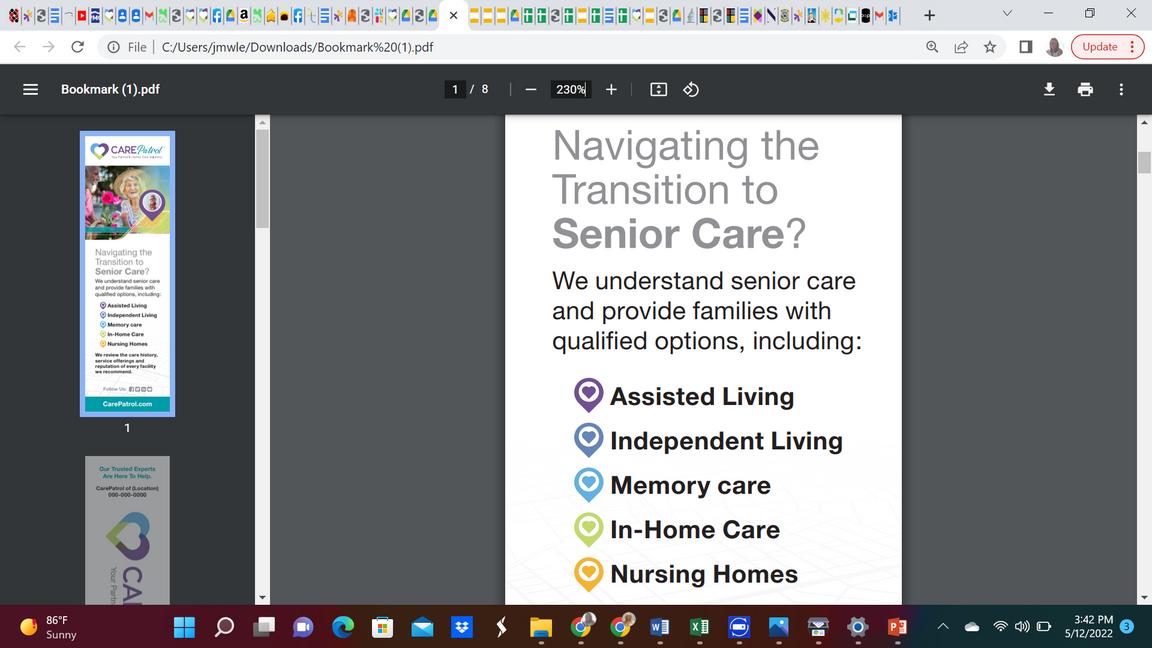










• Among cold destinations, Omaha, Nebraska, has the lowest price for a three-star hotel room, $55, which is 2.4 times


• Among warm destinations, Houston has the lowest price for a three-star hotel room, $40, which is 5.2 times lower than Honolulu, the city
• Among warm destinations, Orlando has the most restaurants (per square root of population), 7.281483, which is 29.0 times more
• The average flight to a popular cold winter destination costs $396.17, lasts 3 hours and 30 minutes and average to a popular warm 5 hours and
Astaggering 114.5 million view ers tuned into Super Bowl 56 in February 2022, breaking all records for the most viewed broad cast in American history. Super Bowl 57 in 2023 is expected to have an even larger viewing audience.
While many are watching the game for fun, illegal wagers in prior years were estimated at more than $3.8 billion and that includes gam bling on big games such as the Super Bowl.
Rising numbers of individuals are betting on fantasy sports through online forums or office pools.
Economist Rodney Paul, from Syracuse University’s Falk College of Sport and Human Dynamics, estimated that more than 2.5 million fantasy leagues exist in the United States.
The Fantasy Sports Trade Associ ation estimates 56.8 million people in the US and Canada participate. The average profile according to FSTA data is a 37-year-old male with a col lege degree who spends $465 a year on fantasy sports, and it’s no surprise that the favorite fantasy sport is
football.
Fantasy sports giants includ ing Draft Kings and FanDuel have attempted to rebrand daily fantasy sports gambling as games of skill. People enjoy playing fantasy sports without realizing the potential nega tive outcomes. When the gains con tinue to be negligible and the activity can escalate to being compulsive, this may be a sign of problem gambling.
Participating in fantasy sports may increase the enjoyment of the experience for some, especially as the level of risk increases. Research has found there is an association between participating in fantasy sports and gambling problems. Sports gamblers were found to significantly spend more than social gamblers per bet ting session.


The National Council on Prob lem Gambling estimated that two million adults in the United States meet the criteria for a gambling addiction, with between four million and six million people being impact ed by problem gambling. Criteria for a gambling disorder includes a need to gamble with increasing amounts of money, restlessness or irritability when attempting to stop, experienc
ing a loss of control, a preoccupation with gambling, has jeopardized family or work relationships, lies to conceal extent of gambling and borrows money to continue to chase one’s losses.
If you are concerned that your gambling habits or those of a loved one have become a problem, help is available.
For more information on local resources and referrals to counseling or treatment, contact the National Council on Alcoholism and Drug Dependence, Rochester Area or the Finger Lakes Problem Gambling Resource Center. To learn more and request a presentation for your com munity group, contact NCADD-RA
or visit www.ncadd-ra.org
Coming soon to NCADD-RA’s Education and Training calendar will be Gambling Brief Intervention to Treatment workshops to provide a baseline of information and steps to engage, intervene and refer.
Adding 1,000 or even 500 steps to your daily routine could lead to a longer life, new re search suggests.
Experts have long en dorsed walking as a free and easy way for people to get a wide variety of health benefits, including im proved sleep, prevention of weight gain and reduced risks for se rious conditions like heart dis ease, stroke and diabetes.
While fitness apps often rec ommend taking 10,000 steps a day, experts say there’s no magic number for improving health. Still, a group of European researchers wanted to get a clearer idea of how many steps might help people live longer.

The research team analyzed 17 studies that gathered data on step counts, deaths from all causes and specifically from cardiovascular problems. The 226,899 adults in the studies were followed for an average of 7.1 years.
Each increase of 1,000 steps taken daily by the studies’ participants was associated with a 22% lower chance of dying from all causes, the researchers calculated. Each 500-step increment was linked to a 7% drop in cardiovascular-related deaths.
When researchers looked at the median number of step counts, walk ing more — especially a lot more — seemed to have a greater connection to reduced death rates.
Compared with a group of peo ple logging almost 4,000 steps daily, risk of death from any cause was reduced by:
- 49% for 5,500 steps;
- 55% for 7,400 steps; and
- 67% for 11,500 steps a day.
For deaths from cardiovascular causes, compared with about 2,350 steps a day, risk fell by:
- 16% for 4,000 steps;
- 49% for 6,700; and
- 67% for 10,400 steps a day.
The study was presented Sat urday at the American Heart As sociation’s Scientific Sessions held recently in Chicago and virtually. The findings are considered preliminary until the full results are published in a peer-reviewed journal.
“The message is you don’t need to walk a lot to get large benefits. Walking just 1,000 extra steps a day can be very important,” said physi cian Maciej Banach, the study’s lead author. “Obviously the more, the better.”
The key is to do it regularly.
Banach, a cardiologist, said he tells his sedentary patients to look for any opportunity to increase their steps. He tells them to leave the car at home and walk to nearby destinations whenever possible.
“It’s so easy. But the important
thing is you can’t just do it for one week or one month. You should be trying to walk every day for the rest of your life,” said Banach, head of the department of preventive cardiology and lipidology at the Medical Uni versity of Lodz in Poland.
New executive director of the local American Red Cross, a former YMCA executive, talks about his new job and mission and challenges of his organization
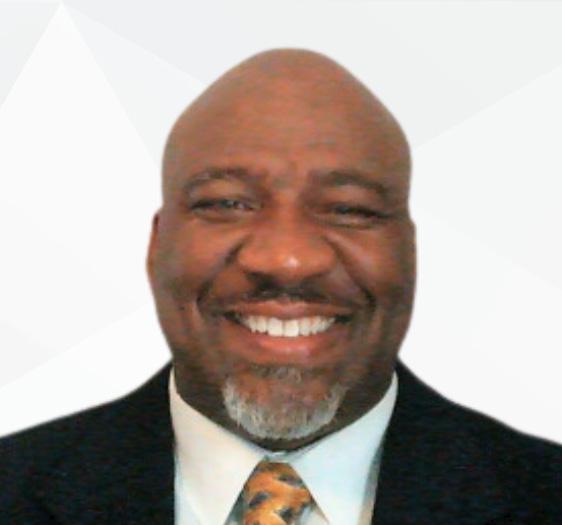 By Mike Costanza
By Mike Costanza
Kenneth Lee, the new executive director of the Greater Roch ester Chapter of the American Red Cross, has spent over 17 years in the nonprofit field. During that time, Lee has held high-level posi tions in YMCAs in Newport News, Virginia and Rochester, including seven years as the executive director of the YMCA of Greater Rochester. The 1990 Roberts Wesleyan College (now Roberts Wesleyan University) graduate stepped into his new role on Oct. 31.
Q. You’ve spent much of your working life in increasingly responsible posi tions with nonprofits. Why are you drawn to these kinds of organizations?

A. I was raised by my mother to have compassion for others. It actu ally took some time to realize that serving others actually provided real work satisfaction.
Q. According to its mission statement, the American Red Cross “prevents and alleviates human suffering in the face of emergencies by mobilizing the power of volunteers and generosity of donors.” Can you describe some of the programs that are important to that mission?
A. We are organized into several lines of service. We are continual ly engaged in our work related to disaster response — our volunteers respond to home fires and provide immediate assistance to those im pacted on almost a daily basis within the chapter. Our blood collection cen ter in West Henrietta processes blood collected from much of New York state and ensures its timely delivery to regional hospitals, and beyond if critical needs arise. Disaster pre
paredness and prevention, especially in relation to home fires, is also an important area of emphasis. We also provide safety plans and free smoke alarms to individuals and families requesting them as part of our annu al Home Fire Safety and Sound the Alarm campaigns.
Q. Before signing up with the Ameri can Red Cross you spent much of your working life with the YMCA, a nonprofit with a somewhat different mission. Can you tell us about your current learning process?
A. Two weeks into the role, I am learning much more about the Red Cross than I had known previous to joining the organization. What I can say is there is a lot of great mis sion-driven work happening here, and I am looking forward to helping the Greater Rochester Chapter and the entire region support the commu nity.
Q. As you settle into your new posi tion, what kinds of challenges does the Greater Rochester Chapter face?
A. The Red Cross is just like many other organizations still com ing out of the pandemic. We need to continually recruit individuals to assist in the delivery of our services and programs. The only difference that we may face is that our work force is made up mostly of volun teers. As a region, we went from over 2,100 volunteers to just over 1,800 today. We are continuing to grow, but we still have a ways to go to get to our pre-pandemic volunteer work force.
Q. How is the Greater Rochester Chap ter addressing that need?
A. There is always an emphasis on engaging our volunteers and keeping them actively involved in our work. One of my responsibili ties will be to continue with what we have always done, and that is to place volunteers in clear leadership positions within the organization, and always look for new ways to rec ognize their important contributions.
Q. Does your chapter face funding pressures of any kind?
A. Fortunately, we have donors and volunteers who generously support our mission-driven work and we are on very solid financial ground. It appears that our commu nity partners are proud to support the mission. Having said that, we are always looking for organizations and individuals who would like to sup port our community by making the Red Cross their charity of choice.
Q. You led the growth of Teen City pro grams at the YMCA of Greater Roches ter. Do you hope to create more pro grams of these kinds in your new role?

A. It’s not about recreating the wheel. The Red Cross has a solid pro gram menu which is the base of our mission-driven work. I was excited to learn that the Red Cross does have youth and teen programming. I am hoping that I can utilize my expe riences in those program areas to support our volunteers and paid staff in that program delivery.
Q. Are there other programs you hope to help create or grow?
A. The Red Cross is really focus ing on our current lines of service. My work each day will be focused on improving the quality and delivery of our current services.
Q. What do you relish about coming to your office?
A. We have a great team of vol unteers and staff who love what they do. I look forward to meeting all of them and working together for one common mission.
Q. You’ve lived in the Rochester area for most of the past 20 years. Is there anything you find particularly attrac tive about living here?
A. I believe the City of Rochester and its surrounding area has the po tential to be one of the greatest to live in in the entire country. My children, when they grew up, they had the op portunity to attend the Science Mu seum (Rochester Museum & Science Center), the (Seneca Park) Zoo and many different parks. They were all affordable and they were not too far to get to. I will enjoy the possibility of trying to help Rochester live up to its full potential in the work that I do.
The American Red Cross pro vides a number of important services and programs, including disaster assistance, training in emergency preparedness, a youth leadership program, home fire safety instruction and the collection and dispensing of blood supplies. The Greater Roch ester Chapter serves Monroe, Alle gany, Cayuga, Livingston, Ontario, Seneca, Wayne and Yates Counties. Lee, a married father of three grown children, spoke with In Good Health about his new position, and what he hopes to accomplish in the coming years.
When it comes to health, pre vention is the best medicine. Many avoidable diseases can cause extensive damage to our health, especially as we age or for those with other medical conditions or a weakened immune system.

While many preventable illnesses are treatable, they can nonetheless result in lasting complications. So getting vaccinated against certain diseases is vital to prevent these illnesses from taking hold in our
bodies. We all know vaccinations are standard during childhood, but adults need immunizations, too.
However, adults require differ ent protections or may need booster shots to ensure the vaccines they received in the past remain effective.

The goal of vaccines is to re duce your chance of infection by developing immunity through your body's natural defense system. When bacteria or viruses get into your body, they reproduce and attack your
system. Your body's immune system has various approaches to fight off this infection. For example, white blood cells can learn how to protect your body from particular germs that you've been vaccinated against.
The way this works is vaccines use a small amount of the particular virus or bacteria and introduce it into your system. The antibodies then learn how to fight off the germs in the event you encounter them in a larger quantity. For this reason, you may have a slight reaction to the vac cine, such as a fever, while your body works to fight it. Still, this is very mi nor compared to the complications of getting a preventable disease. There are many types of vaccines, and each can interact with your body differ ently. Some vaccines require multiple doses or else a booster later on to rebuild your immunity levels.
The vaccines recommended in adulthood offer yearly protection, are recommended for specific life or health situations or are boosters to keep your childhood vaccinations working effectively.
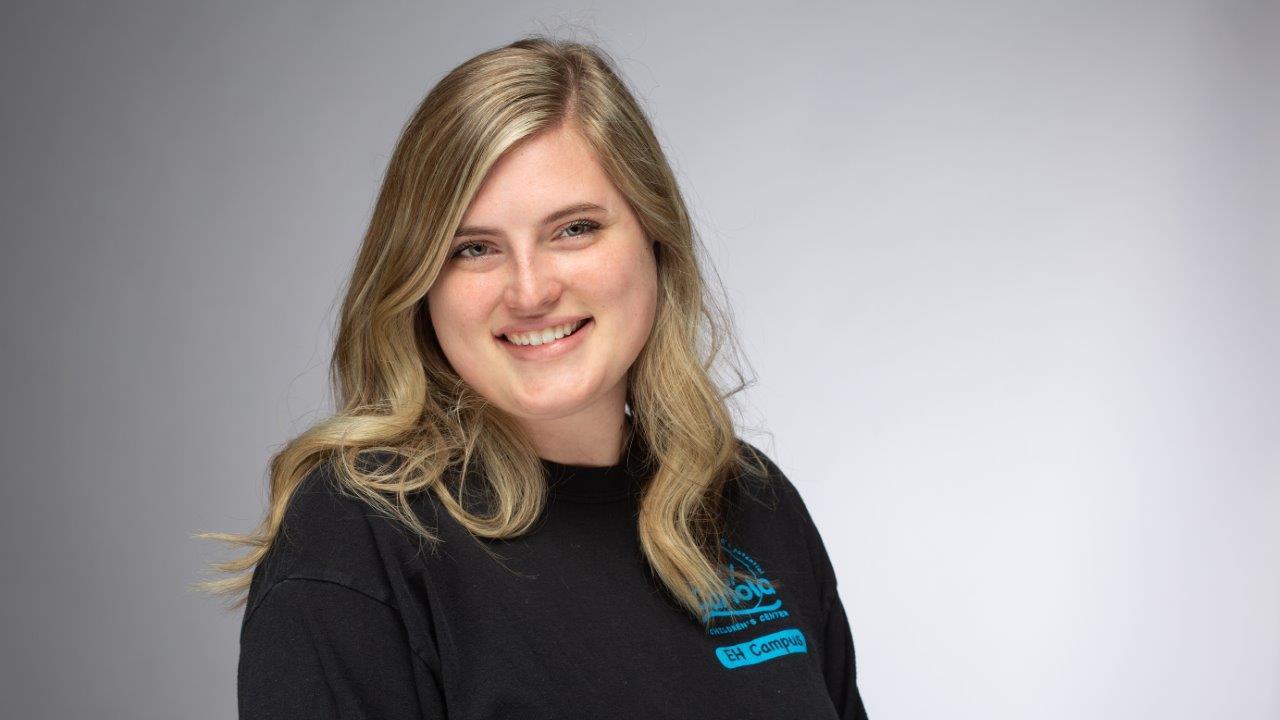
Every individual has different medical needs, but common adult immunization recommendations include:
• Influenza: The flu shot is recom mended yearly for every person old er than 6 months, especially for those at higher risk due to a weakened immune system, medical conditions or close contact with those at risk for the flu.
• Tetanus, Diphtheria, and Pertussis (Tdap): The initial Tdap shot is currently given once, usually around the age of 11-12. Boosters are recom mended every 10 years after that, especially if you come in contact with pregnant women or young infants.
• Measles, Mumps, Rubella (MMR): If you were born before 1957, you are likely immune from MMR. If you were born after 1957 and don't have evidence of immunity, this vaccina tion is recommended, especially if you travel internationally. However, if you have a weakened immune system, it is not recommended.
• Recombinant Zoster (RZV): The Zoster vaccine is the currently pre ferred shot to prevent shingles. It's especially recommended for those 50 or older since the risk and the likeli hood of complications from shingles increases with age. Even if you've had shingles, you can get it again, so the vaccine is still recommended.
• Pneumococcal Polysaccharide (PPSV23): This vaccine is for pneumo coccal diseases like meningitis and bloodstream infections. It’s recom mended for everyone 65 and older and for younger individuals with certain health conditions.
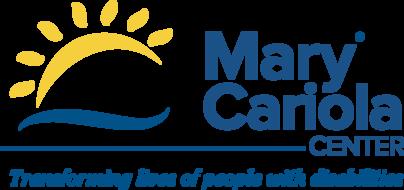
• Pneumococcal Conjugate (PCV13): This immunization also works to prevent pneumococcal disease and pneumonia for those with conditions that weaken their immune system.
The CDC offers a vaccine as sessment tool to help you determine which vaccines you may need based on your own personal factors such as age or health conditions. The best way to make sure you are up to date on immunizations is to discuss your medical history and needs with your doctor.
 Dear Savvy Senior,
Dear Savvy Senior,
What are the most common scams today that target elderly seniors? My 75-year-old mother has been swindled several times over the past year, so I’m being extra cautious.
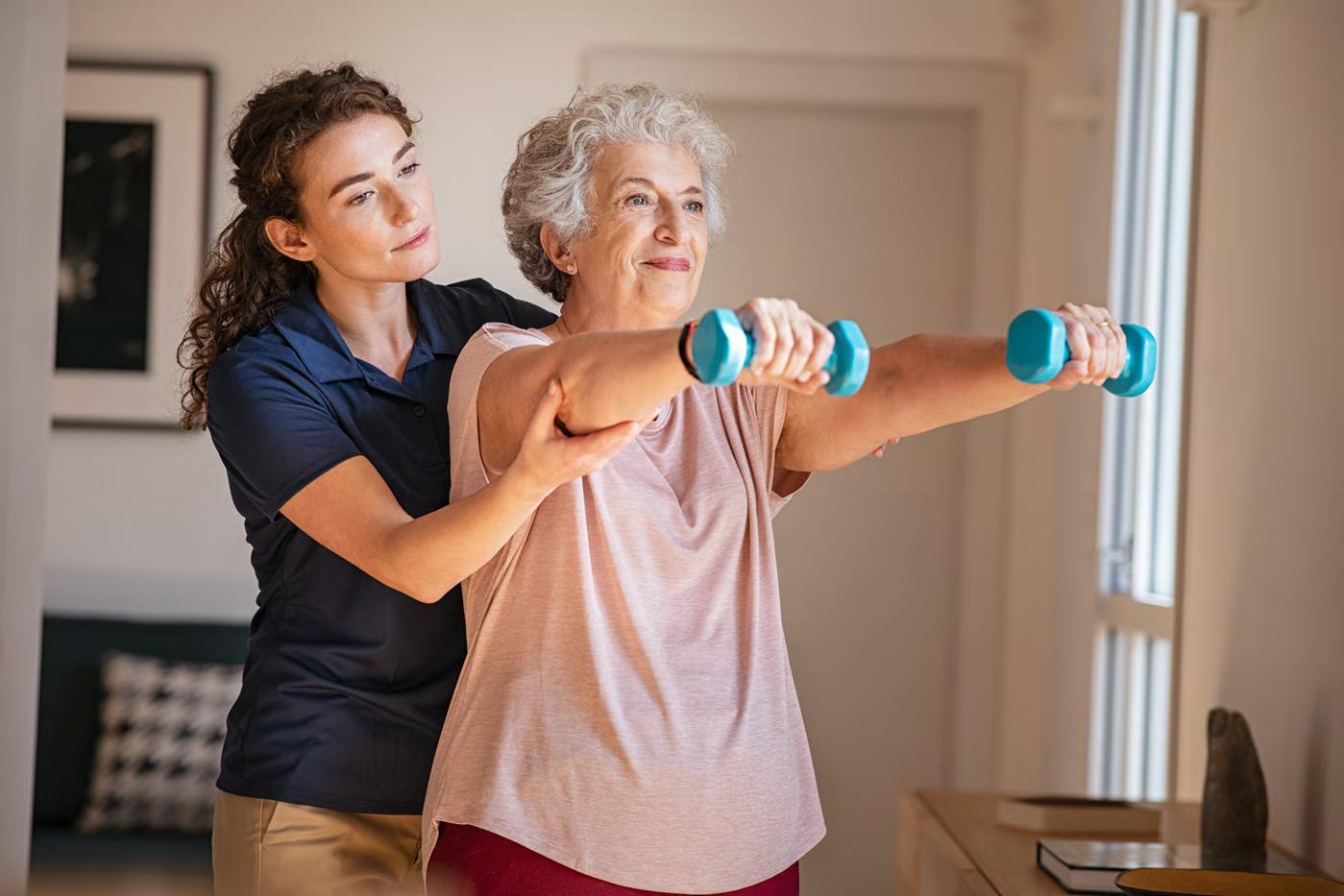 — Paranoid Patty
— Paranoid Patty
Great question! While many scams today are universal, there are certain types of fraud that specifically target older adults or affects them disproportionately. Unfortunately, these senior targeted scams are on the rise.
According to the Federal Bureau of Investigation (FBI), in 2021 there were 92,371 older victims of fraud resulting in $1.7 billion in losses. This was a 74% increase in losses com pared to 2020.
Here are five of the most common senior scams that were reported last year, that both you and your mom should be aware of.
1. Government imposter scams: These are fraudulent telephone calls from people claiming to be from the Internal Revenue Service, Social Security Administration or Medi care. These scammers may falsely tell you that you have unpaid taxes and threaten arrest or deportation if you don’t pay up immediately. Or they may say your Social Security or Medicare benefits are in danger of being cut off if you don’t provide personal identifying information. They may even “spoof” your caller ID to make it look like the govern ment is actually calling.
2. Sweepstakes and lottery scams: These scams may contact you by phone, mail or email. They tell you that you’ve won or have the potential to win a jackpot. But you need to pay a fee or cover taxes and processing fees to receive your prize, perhaps by prepaid debit card, wire transfer, money order or cash. Scammers may even impersonate well-known sweepstakes organizations, like Pub lishers Clearing House, to fool you.

3. Robocalls and phone scam: Robocalls take advantage of sophisti cated, automated phone technology to carry out a variety of scams on trusting older adults who answer the phone. Some robocalls may claim that a warranty is expiring on their car or electronic device, and payment is needed to renew it. These scam mers may also “spoof” the number to make the call look authentic.
One common robocall is the “Can you hear me?” call. When the older person says “yes,” the scammer
records their voice and hangs up. The criminal then has a voice signature to authorize unwanted charges on items like stolen credit cards.

4. Computer tech support scams: Theses scams prey on senior’s lack of knowledge about computers and cybersecurity. A pop-up message or blank screen usually appears on a computer or phone, telling you that your device is compromised and needs fixing. When you call the sup port number for help, the scammer may either request remote access to your computer or that you pay a fee to have it repaired.
5. Grandparent scam: parent scam has been around for several years now. A scammer will call and say something along the lines of: “Hi Grandma, do you know who this is?” When the unsuspecting grandparent guesses the name of the grandchild the scammer most sounds like, the scammer has established a fake identity.
The fake grandchild will then ask for money to solve some unexpect ed financial problem (legal trouble, overdue rent, car repairs, etc.), to be paid via gift cards or money trans fers, which don’t always require identification to collect.

Some other popular scams targeting older adults right now are romance scams through social media and online dating sites, COVID-19 scams, investment scams, Medicare and health insurance scams, and Internet and email fraud.
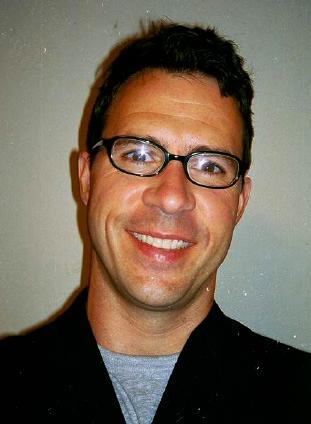
For more information on the different types senior scams to watch out for, along with tips to help your mom protect herself, visit the Na tional Council on Aging website at NCOA.org, and type in “the top 5 fi nancial scams targeting older adults” in the search bar.
Send your senior questions to: Savvy Senior, P.O. Box 5443, Norman, OK 73070, or visit SavvySenior. org. Jim Miller is a contributor to the NBC Today show and author of “The Savvy Senior” book.
Our lives are filled with big decisions. For seniors, there’s one decision that’s nearly uni versal: should I consider moving to a senior living community? Everyone approaches the topic in their own way. Some with the help of friends and family — others through inward reflection. For almost everyone, though, it comes with a lot of won dering where to begin.
Knowing what to look for and what to ask can give seniors and their families the confidence and knowledge they need to make a great decision. Starting the search early allows seniors to make decisions comfortably and on their timeline.
“Those first steps towards exploring senior communities can be intimidating,” said Brian Burg er, marketing representative for St. Ann’s Community. “If a person wants to come in just to get informa tion, we absolutely encourage them to and seeing places in person can take away so much of the mystery. It’s a great opportunity to ask your questions.”
So what questions should a person ask when exploring a senior living community? What should you look for during your visit?
One of the most important things to consider is location. Are you near family and friends or shopping and medical services? In many cases, a person can determine whether or not a location is desirable without visit ing. Still, it’s important to experience it in person to see what environment it offers, rural, city or somewhere in between. How is it laid out? What is the atmosphere like?
Senior communities come in a variety of configurations. For exam ple, the campus at St. Ann’s Commu nity at Cherry Ridge sprawls across 41 wooded acres, allowing for more activity and independence due to its design. Other communities like St. Ann’s Community at Chapel Oaks are designed so residents can enjoy dining or activities without ever having to go outside. With connec tions to the club-style community center, you can get to your morning yoga class and leave the winter coat behind.
“The setting was top of mind for St. Ann’s when our Cherry Ridge Campus was being planned,” said Burger. “It’s a unique campus for the area by design. There are woods, ponds and the ability to really enjoy the outdoor spaces and views, all in addition to the other features you’d expect from a senior community.”
Seniors should also look into what extra services a community offers. Examples include transpor tation, on-site physicians, trips to shopping or entertainment, on- and off-site activities and a wide array of safety features. Independent living communities may offer any or all of
these services. Each place is differ ent, so doing some early research is recommended.
“It’s so important to ask what a community can do to help a person stay comfortable and happy without having to sacrifice any indepen dence,” said Burger. “A great exam ple is our transportation services. Many of our residents drive inde pendently, but on a snowy Rochester day, our team of drivers has warm cars, and they’re ready to get people to their destinations safely and stressfree.”
Above all else, a person should consider their own future when choosing a community. Needs can sometimes take unexpected turns, triggering an avalanche of changes and leaving seniors feeling they’ve lost control. When choosing a retire ment community, it’s always best to find one that offers a full continuum of care.
A full continuum of care means that a community offers more than independent living options. Should you need help with the daily activi ties of living or require skilled nurs ing care, you will have those options on the same campus. Many seniors and their families want to stay in the community they chose even if they can’t stay in the same apartment or cottage they originally selected. And in a continuum of care, established residents will receive priority access to other levels of care as a member of the community.
“It’s a great way to maintain con trol over all aspects of your future,” said Burger. “When you choose a community like St. Ann’s with our full continuum of care, you’re making a choice about not only your current living arrangement, but you’re also ensuring that more help is available for you in the future should you ever need it.”
For seniors, having a plan in place is one of the most important things they can do. In the Rochester area, there’s no shortage of senior living options to consider. Staying ahead of the game and narrowing down their choices sooner than later allows seniors to make these critical decisions on their own terms.
“It all starts with someone giving us a quick phone call,” said Burger. “We’re always here to help peo ple with these decisions. It doesn’t matter if they’re trying to plan for a move next week, five years from now or if they just have some questions. It’s our job and our pleasure to help.”
Brian Burger is a mar keting representative for St. Ann’s Commu nity at Cherry Ridge in Webster. Contact him at bburger@mystanns. com or 585-697-6702 or visit www.stann scommunity.com.
If you are eligible at age 65, your initial enrollment period (IEP):
• Begins three months before your 65th birthday.
• Includes the month of your 65th birthday.
• Ends three months after your 65th birthday.
If you are automatically enrolled in Medicare Part B or if you sign up during the first three months of your IEP, your coverage will start the month you’re first eligible. If you sign up the month you turn 65, your coverage will start the first day of the following month. This won’t change with the new rule.
Starting Jan. 1, 2023, your Medi care Part B coverage starts the first
Q.: When a person who has worked and paid Social Security taxes dies, are ben efits payable on that person’s record?
A.: Social Security survivors ben efits can be paid to:
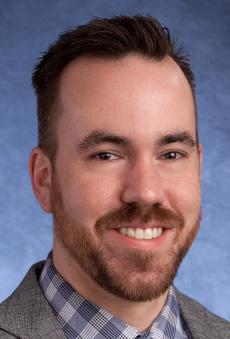
• A widow or widower—unre duced benefits at full retirement age, or reduced benefits as early as age 60.
• A disabled widow or widow er—as early as age 50.
• A widow or widower at any age if he or she takes care of the deceased’s child who is under age 16 or disabled, and receiving Social Security benefits.
• Unmarried children under 18 or up to age 19 if they are attending high school full time. Under certain circumstances, benefits can be paid to stepchildren, grandchildren, or adopted children.
• Children at any age who were disabled before age 22 and remain disabled.
• Dependent parents age 62 or older.
Even if you are divorced, you still may qualify for survivors ben efits. For more information, go to www.ssa.gov.
Q.: I plan to retire soon. When are So cial Security benefits paid?
A.: Social Security benefits are paid each month. Generally, new re tirees receive their benefits on either the second, third or fourth Wednes day of each month, depending on the day in the month the retiree was born. If you receive benefits as a spouse, your benefit payment date will be determined by your spouse’s birth date.
day of the month after you sign up if you sign up during the last three months of your IEP.
Before this change, if you signed up during the last three months of your IEP, your Medicare Part B coverage started two to three months after you enrolled.
If you don’t sign up for Medicare Part B during your IEP, you have another chance each year during the general enrollment period (GEP). The GEP lasts from Jan. 1 through March 31. Starting Jan. 1, 2023, your cover age starts the first day of the month after you sign up.
You can learn more about these updates on our Medicare webpage at www.ssa.gov/medicare and our Medicare publication at www.ssa. gov/pubs/EN-05-10043.pdf.
Please pass this information along to someone who may need it.
Here’s a chart showing how your monthly payment date is deter mined:
Day of the Month You Were Born Social Security Benefits Paid On
1st-10th Second Wednesday
11th-20th Third Wednesday
21st-31st Fourth Wednesday
For a calendar showing actual payment dates, see the Schedule of Social Security Benefit Payments at www.ssa.gov/pubs.
Q.: Will my Social Security disability benefit increase if my condition gets worse or I develop additional health problems?
A.: No. We do not base your Social Security benefit amount on the severity of your disability. The amount you are paid is based on your average lifetime earnings before your disability began. If you go back to work after getting disability bene fits, you may be able to get a higher benefit based on those earnings. In addition, we have incentives that al low you to work temporarily without losing your disability benefits. For more information about disability benefits, read our publications “Dis ability Benefits and Working While Disabled — How We Can Help.” Both are available online at www.ssa. gov/pubs.
One year after receiving an Ex cellus BlueCross BlueShield Health Equity Award grant, several local nonprofits have started or expanded new efforts to address racial, ethnic, language, rural or other health disparities.
Too often, underserved com munities experience poor health outcomes and lower quality of care. That’s why the elimination of health disparities is a big focus locally and nationally.
“Many of these efforts are laying the groundwork for long-term ini tiatives and we anticipate that these efforts have the potential to touch thousands in our communities, espe cially those in our Black and Brown communities,” said physician Gina Cuyler, Excellus BCBS vice president of health equity and community investments. “These organizations have made great strides. This is health equity in action!”
These initiatives represent some of the latest efforts in the Rochester region to address health equity.
The award recipients include: BI POC PEEEEEEK; Empire Justice Cen ter; Finger Lakes Community Action, a subsidiary of Wayne County Action Program, Inc.; Mt. Hope Family Cen ter; National Witness Project; Teen Empowerment; YWCA of Rochester and Monroe County, Aenon Mission ary Baptist Church and Coordinated Care Services, Inc.
These programs help reduce health barriers for youth, those with differing physical and mental abil ities, new moms and their babies, and individuals with limited English proficiency or who are deaf and hard of hearing.
See the following details for more on how each program is having an impact.
• Partners in Community Develop ment — Black Indigenous People of Color
Its Parent Mental Health Project applied the Health Equity Award toward culturally appropriate edu cation and information opportunities to parents and caregivers throughout the community.
“Our focus is on education around the stigma related to mental health in communities of color, to improve mental health outcomes and address disparities,” said Sara Taylor, director of BIPOC PEEEEEEK. “The award helps us bring neighbor hood-based awareness to hundreds of families, empowering them to play an active role in elevating their voice about mental health, care, services, and policies.”
Over the past several months, the program has impacted more than 1,000 people through its hands-on engagement and education activ ities. Participating in health and wellness fairs, offering parent and caregiver training, informational sessions, and collaborating with over 30 community agencies, BIPOC PEEEEEEK brought mental health awareness, linkages to mental health services and peer support to commu nity neighborhoods.
These grassroots efforts are making an impact. “I was curious to know more about the services that are provided for families who needed emotional support while taking care of loved ones with mental challeng es,” said Ebony Stubbs, a program participant. “I’ve become more aware of the efforts and hard work that’s being done around mental health disparities in the BIPOC community. I’m glad to know I have a point of contact when I come across other families in need of resource assis tance.”
• Empire Justice Center received a Health Equity Award to enhance the language accessibility of Common Ground Health’s “My Health Story 2022,” a survey that identifies health inequities in the communities.
The survey will now include the needs of people with limited English proficiency, and the deaf and hard of hearing communities. The funds sup ported a new text-to-speech survey option in English and Spanish and an American Sign Language (ASL) version.
Empire Justice also used the funds to provide more than 10,000 “iSpeak/iSign,” language identifica tion cards to individuals with limited English proficiency or are deaf or hard of hearing, to share with pro viders and advocate for their need to communicate with an interpreter.
• Finger Lakes Community Action, a subsidiary of Wayne County Action Program, Inc., used their Health Equity Award to expand a program that provided peer support and other assistance to a new target population: People of color who had a disabil ity (physical, mental or behavior al). They’ve interacted with about 190 youth and families so far.
In several cases, peer support specialists helped teenagers who struggled with mental health issues, drug use or crime. The specialists provided social, emotional and men torship support, along with trans portation to appointments, steady employment and more. Today, many of these teens are thriving, doing bet ter in school, holding jobs and better managing their conditions.
“We’ve learned how important it is for disenfranchised youth to be able to connect with a peer, someone who looks like them, talks like them and has gone through what they’ve gone through,” said Donna Johnson, program administrator, Finger Lakes Community Action. “This success has helped us receive subsequent funds to expand these services fur ther.”
• Mt. Hope Family Center’s Health Equity Award provides support for young mothers and their babies through the building healthy chil dren (BHC) program, a collaboration between Mt. Hope Family Center and University of Rochester Medical Center’s social work department. With this funding, BHC staff mem bers who reflect the ethnicity and cul ture of the families being served can now support their families with their breastfeeding goals.
“Training women of color to become proficient in breastfeeding education reduces health disparities by having women of the community support women in the community, to communicate information in a more relevant and culturally responsive manner” said Jessica Luciano-Bath, a pediatric social worker of BHC. “We believe that we will improve equity by making the support accessible to each and every family we enroll in the program.”
Eight staff members have re ceived training in lactation counsel ing, allowing the program to expand its services. BHC supports moms in navigating the adjustment to moth erhood and caring for their babies. Staff can now also offer support that can be used on the spot during home visits as moms adapt to breastfeed ing.
• The local National Witness Project (NWP) used a Health Equity Award to help increase mammography screen ing rates for Black women.
“With this funding, we’ve pro vided breast health education, com munity outreach, navigation services and transportation for women to get mammography screenings,” says Dee Johnson, director of the NWP.
– Worked with the Rochester Housing Authority and others to help their tenants access medical facilities for mammograms.
– Hosted three educational pro grams in the 14621 zip code empow ering 35 women to get medical care.
– Conducted two door-to-door community outreach events in the 14611 and 14621 zip codes providing education to 180 women and men with 34 people needing medical services.
Veta James of Rochester attend ed NWP’s education and outreach program at her church. “The NWP provided transportation for me to and from my mammography ap pointment. I would not have been able to get there without their help,” says James. “I now have peace of mind after getting a negative test re sult and knowing I don’t have breast cancer.”
• Teen Empowerment (TE) received a Health Equity Award to expand its Youth Organizing program to multiple neighborhood-based sites to address the public health issue of community-level violence among young people. Teenaged youth organizers (YOs) connect, uplift and engage with their peers about issues and obstacles in their neighborhoods they find harmful or hold them back.
“The expansion to hire young people in their own neighbor hoods is vital to better serve youth and our whole community,” said Shanterra Randle-Mitchum, TE program director. “Youth organizers prove over and again the power they can bring to their communities.”
This year, YOs communi ty-change initiatives focusing on mental health and its impact on trau ma and violence, engaged more than 918 youth, plus reached thousands of all ages through presentations and events across the city and state.
“These months have shown me how willing others are to help,” said a 16-year-old youth organizer. “I have accomplished and learned things I otherwise wouldn’t have known or done anything about. When I tell my friends about Teen Empowerment they are always so in terested since we talk about problems they face too. Outreach is something we do in our communities to let people know, ‘hey we are here and want to help as long as you meet us halfway and show up, we can build and educate.’ There is always more room to firmly include more people.”
• A Health Equity Award helped the YWCA of Rochester and Monroe County, Aenon Missionary Bap tist Church and Coordinated Care Services, Inc. launch a new health education program for single parents as they navigate the complexities of the pandemic and raising children.

About 200 individuals partici pated in the workshops so far and learned about mental health, selfcare, finances, co-parenting, available community resources and more.
“Some of the single parents said there’s a noticeable increase in communication with their child’s other parent, and an increased un derstanding for the importance of ongoing reflection and taking care of self,” said Myra Henry, President and CEO, YWCA of Rochester and Monroe County. “We also continue to hear from other community churches and organizations who would like to get involved in this program.”

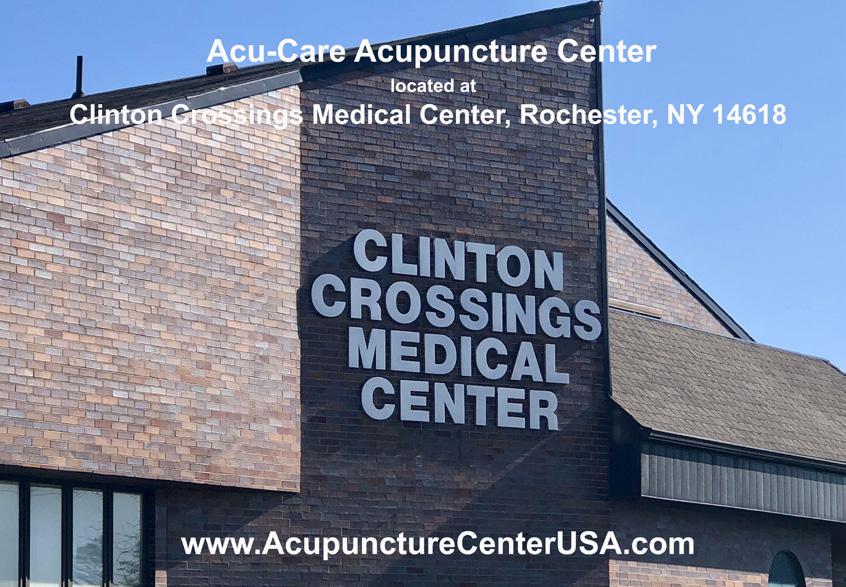
The American Red Cross of Western New York has named Kenneth Lee as executive director of the greater Rochester chapter, which serves Allegany, Cayuga, Livingston, Monroe, Ontario, Seneca, Wayne and Yates Counties.
Lee has a lengthy history in nonprofit com munity service, having served in leadership positions in the YMCA for 17 years. He began his new role Oct. 31. “We’re excited to wel come Ken to our leadership team,” said Nick Bond, CEO of the Red Cross Western New York Region. “The leadership experience he brings from a service-oriented organization, as well as his expertise in developing greater efficiencies, will be a great benefit to our dedicated volunteers and staff as we continue our mis sion-driven work within not only the greater Rochester chapter, but our entire 27-county region.”
Most recently, Lee founded the KenLeePractice, providing career strategy and guidance for teens. Prior to that, the Rochester native served as the operations director for the Chester Carlson/Southwest YMCA. During his two-year tenure in that position, Lee created a senior resource center during the COVID-19 pandemic and increased membership enrollment. His role at the Carlson/ Southwest YMCA marked a return to Rochester for Lee, as for the previous seven years he served as operations director for the Newport News (Vir ginia) YMCA.
A native of Plainfield, New Jersey, Lee’s YMCA career actually launched in Rochester, in 2005, when he was named an executive director for the YMCA of greater Rochester, a role in which he served until 2012. Before joining the YMCA, Lee was employed as a continuous improve ment manager for Valeo Electrical Systems.

“It is an honor and a great opportunity to work for an organiza tion that has a long history of being
Hearing Loss Association of America Rochester Chapter offers a series of programs during December for anyone interested in hearing loss. In person meetings take place at St. Paul’s Episcopal Church, East Ave nue at Westminster Road, Rochester (across from the George Eastman Museum); virtual meetings are for
present and helpful for humanity,” Lee said.
A graduate of Roberts Wesley an College, where he majored in business management with a minor in communications, Lee resides in Rochester with his wife, Moniek. They have three grown children; Andre, Ameer and Amari.

Sarah E. Rehler of Honeoye Falls was recently named the director of case management and social work for UR Medicine Thompson Health.
Rehler obtained a master’s degree in social work from the Uni versity of Michigan School of Social Work and is licensed by New York state as a master social worker.
Having worked for the Cat taraugus County Department of Community Services, Rehler joined Strong Memorial Hos pital as a medi cal-social worker in 2010, working first on an adult acute medicine unit and later on an inpatient pal liative care and hospice unit. She then served as senior social worker for the palliative care unit and, from 2019 through this past summer, served as its manager.
At Thompson, Rehler is oversee ing a team of 13 social workers and case managers who help patients and families throughout the 113-bed F.F. Thompson Hospital.
“We are incredibly happy to have Sarah join the Thompson Health family,” said Vice President of Patient Care Services/Chief Nursing Officer Hazel Robertshaw.
The Jewish Home of Rochester, an affiliate of Jewish Senior Life, has been recognized for excellence as a Best Nursing Home for a fifth year by U.S. News & World Report.
Both long-term care and shortterm rehabilitation received ratings at
the highest level for 2022-2023.
Only 16% of skilled nursing facil ities nationwide earned this distinc tion. The Jewish Home is one of only 38 out of 611 nursing homes in New York state to receive an overall rating of five out of five.
“The Jewish Home has always been committed to providing quality care the way we would care for our own families,” said registered nurse Michele Schirano, administrator of the Jewish Home of Rochester. “We are honored to be recognized for these efforts with this award.”
Short-term rehabilitation at the Jewish Home rated higher than other facilities across New York state and the U.S. in several performance mea sures, including patient discharge to home, patient visits to the emergency room, infection prevention.
Long-term care at the Jewish Home also outperformed nursing homes state- and nation-wide in the following quality measures: the number of hospitalizations per 1000 patient days; the number of emergen cy room visits per 1000 patient days; sustained self-care; vaccination rates
For 2022-2023, U.S. News rated more than 15,000 nursing homes on care, safety, infection rates, staffing and health inspections. The Best Nursing Homes methodology factors data such as resident care, safety, and outcomes.
WellNow Urgent Care, one of the country’s fastest-growing urgent care providers, recently opened its newest center in Pittsford.
Located at 2760 Monroe Ave., the new facility offers treatment for non-life-threatening injuries and illnesses, COVID-19 testing and treat ment, and occupational medicine ser vices seven days a week from 8 a.m. to 8 p.m. Urgent care patients can simply walk in or, if preferred, sched ule a visit online.
The new WellNow facility will also be home to WellNow Allergy, a full-service allergy care provider for patients of all ages. WellNow Allergy provides testing and treatment for multiple types of allergies, including seasonal and environmental allergies, food allergies, medication allergies (including penicillin), asthma, and eczema. No referral is needed, and allergy immunotherapy, if pre scribed, can be scheduled online at
the patient’s convenience.
Westside Psychological Ser vices at Roberts Wesleyan University was recently awarded a $50,000 grant from the Butterfield Foundation, which provides grants to Christian nonprofit organizations that meet the whole-person health care needs of people who are underserved or uninsured.
The funds will enable the clinic to become more self-sustaining by supporting the purchase of new testing kits and computer equipment, including a variety of clinical tools, cognitive measures and assessment instruments used to evaluate and diagnose autism spectrum disorder (ASD).
“We’re grateful to the Butterfield Foundation for this generous gift, which will significantly improve our ability to provide psychological assessment services to the Greater Rochester community and expand Westside Psychological Services,” said Cheryl Repass, professor of psychology, department chairwom an and traditional undergraduate and graduate program co-director at Roberts Wesleyan University. “The testing kits will expand access to ASD evaluation services to keep pace with the demand in our area for these evaluations and will also allow for additional student clinicians to serve more clients each week.”
Westside Psychological Services at Roberts Wesleyan University pro vides a broad range of affordable, ev idence-based assessment and therapy services for children, adolescents, families and adults. Part of the com munity institutes at the university, Westside Psychological Services also serves as a training center for psy chotherapy and diagnostics, where clinicians assess and treat clients us ing approaches that are validated by recent research and matched to the individual needs of clients. Clinicians include staff psychologists, faculty members in the Roberts Wesleyan University psychology department, and doctoral students in the univer sity’s clinical/school psychology pro gram working under the supervision of licensed faculty.
those using the Zoom platform: pre registration is required.
• 10 a.m. : Hearing Other Peo ple’s Experiences (HOPE) In person. Prospective, new or experienced hearing aid users can share their experiences. Facilitated by retired au diologist and hearing aid user Joseph Kozelsky;
• 11 a.m. to 11:30 a.m.: social time. Church parish hall; • 11:30 a.m. – non: business
meeting and announcements. Church parish hall.
• Noon. News and update from HLAA . Facilitated by HLAA Nation al Board of Directors member Peter Fackler. Hybrid. In person, church parish hall and virtual Zoom. He will discuss over the counter hearing aids, which have received extensive publicity since their recent rollout.
• 10 a.m. to 2 p.m.: Assistive listening devices demo center. Tech
nology team. In person. Lifespan, 1900 South Clinton Avenue, Roches ter 14618. At this free demonstration area, consumers are invited to view and try out a selection of assistive lis tening devices before actually buying them.
All HLAA programs are free. Most meetings feature an induc tive loop hearing system and open captions. For more information, visit the organization web site at hearin glossrochester.org or telephone 585 266 7890. Visit the HLAA website at hearinglossrochester.org.
